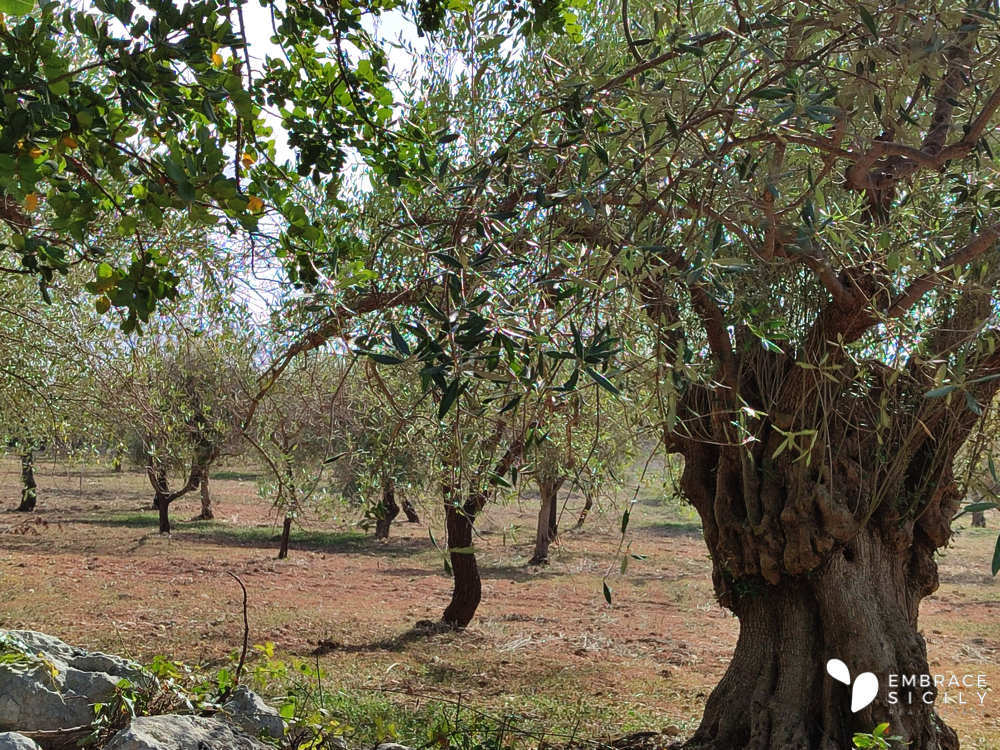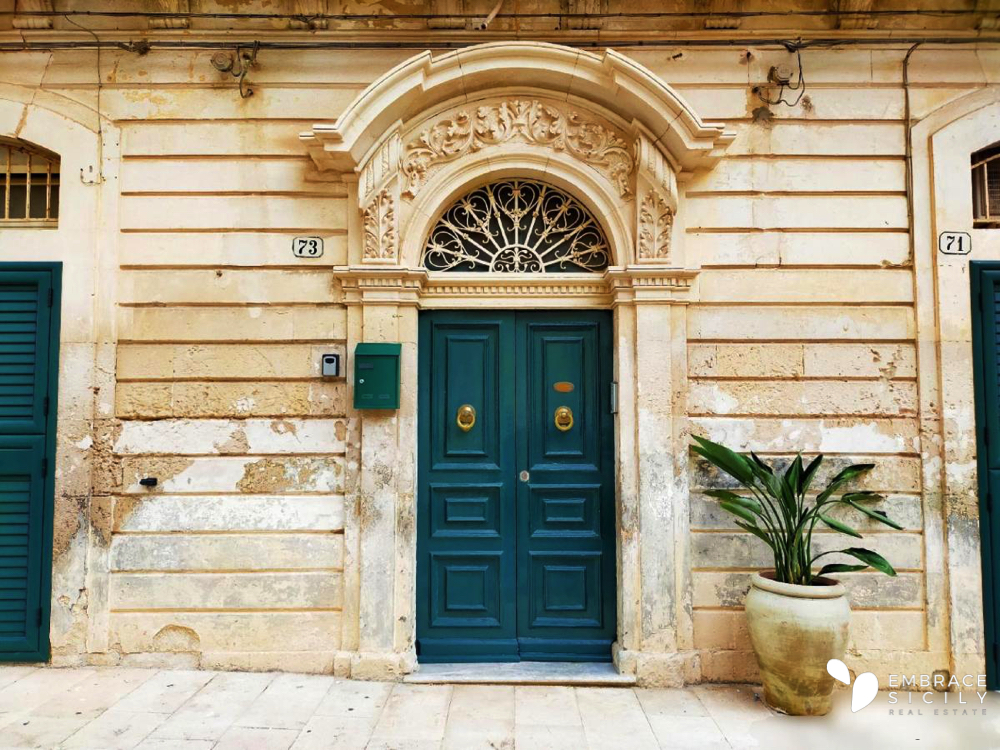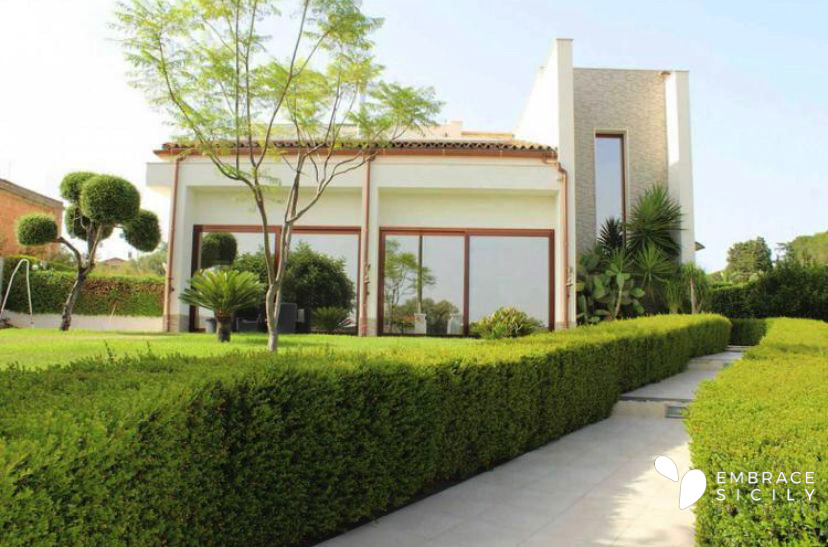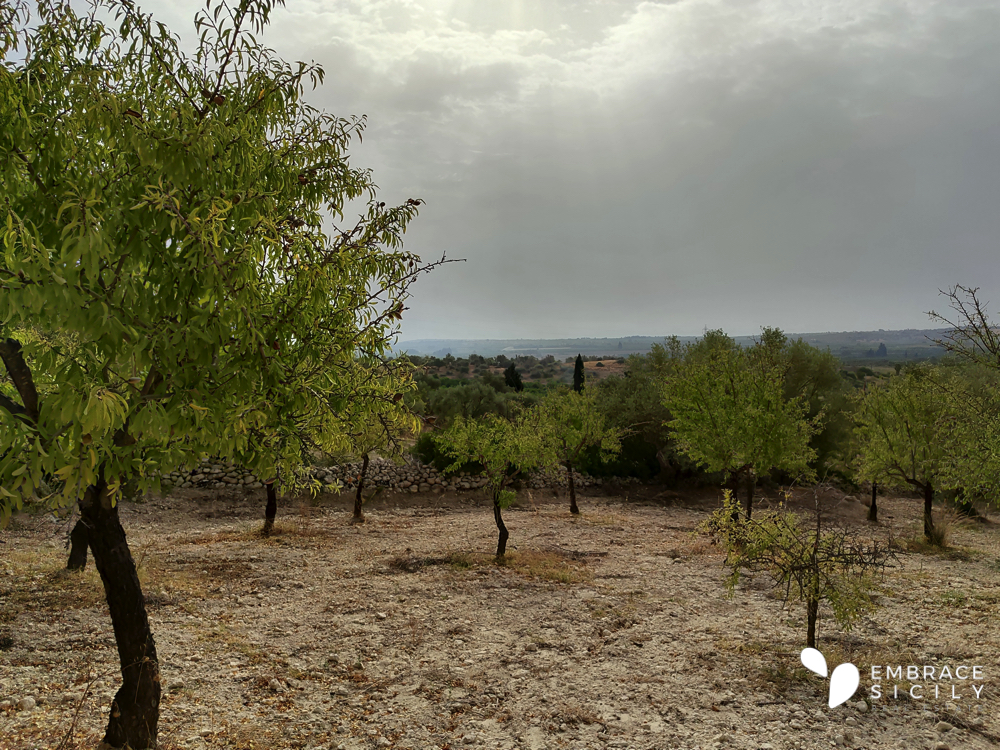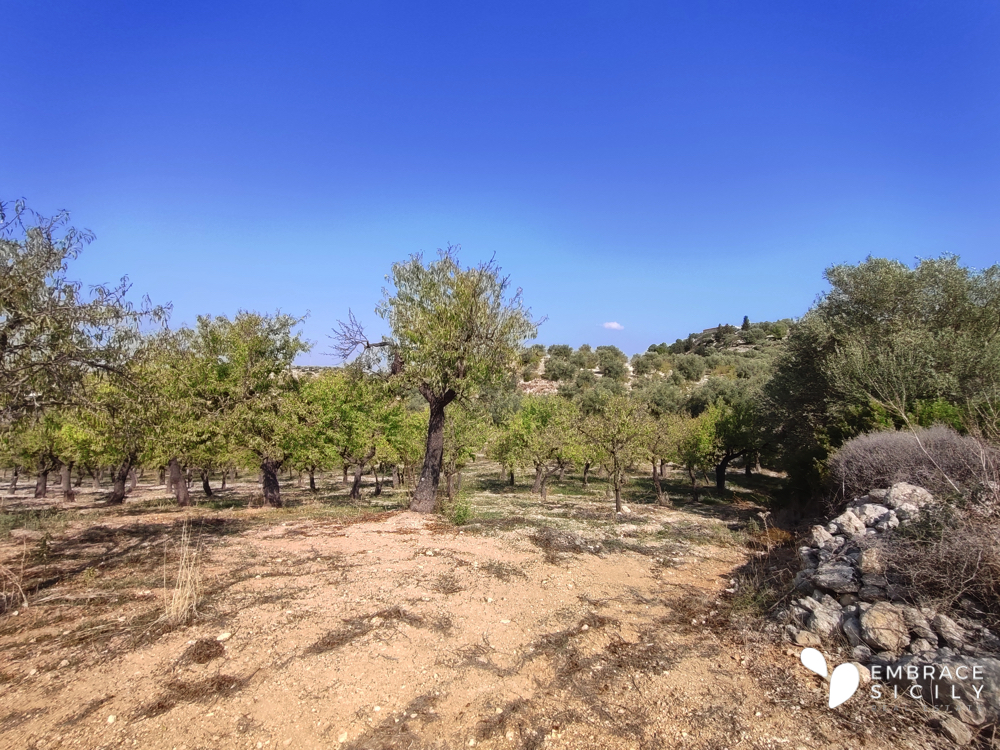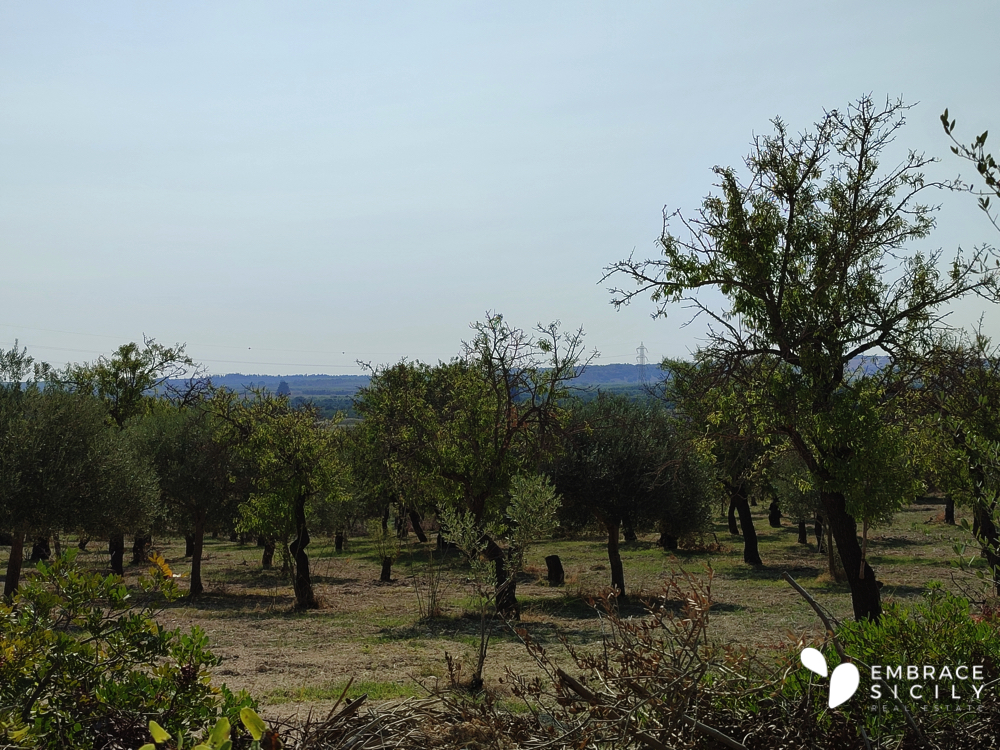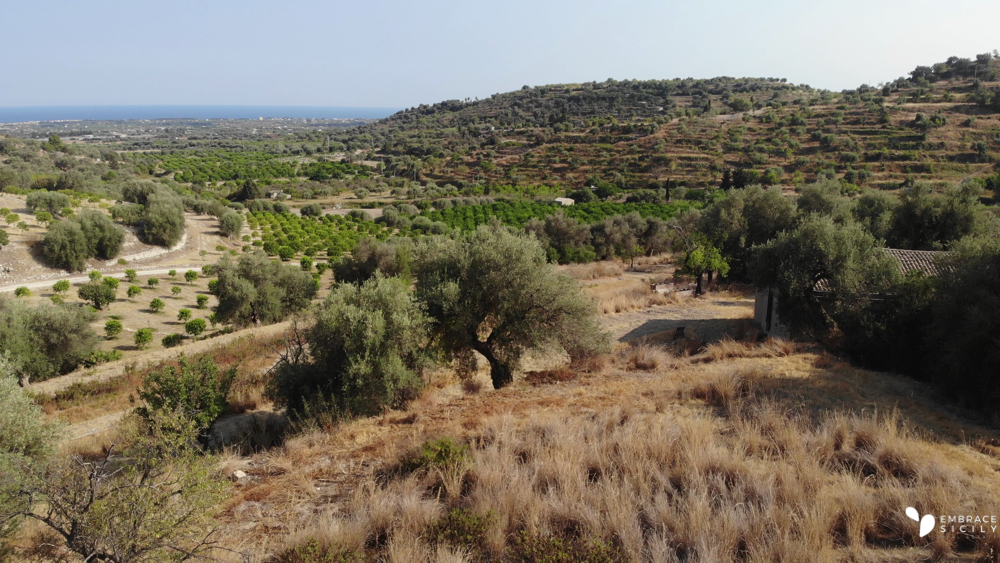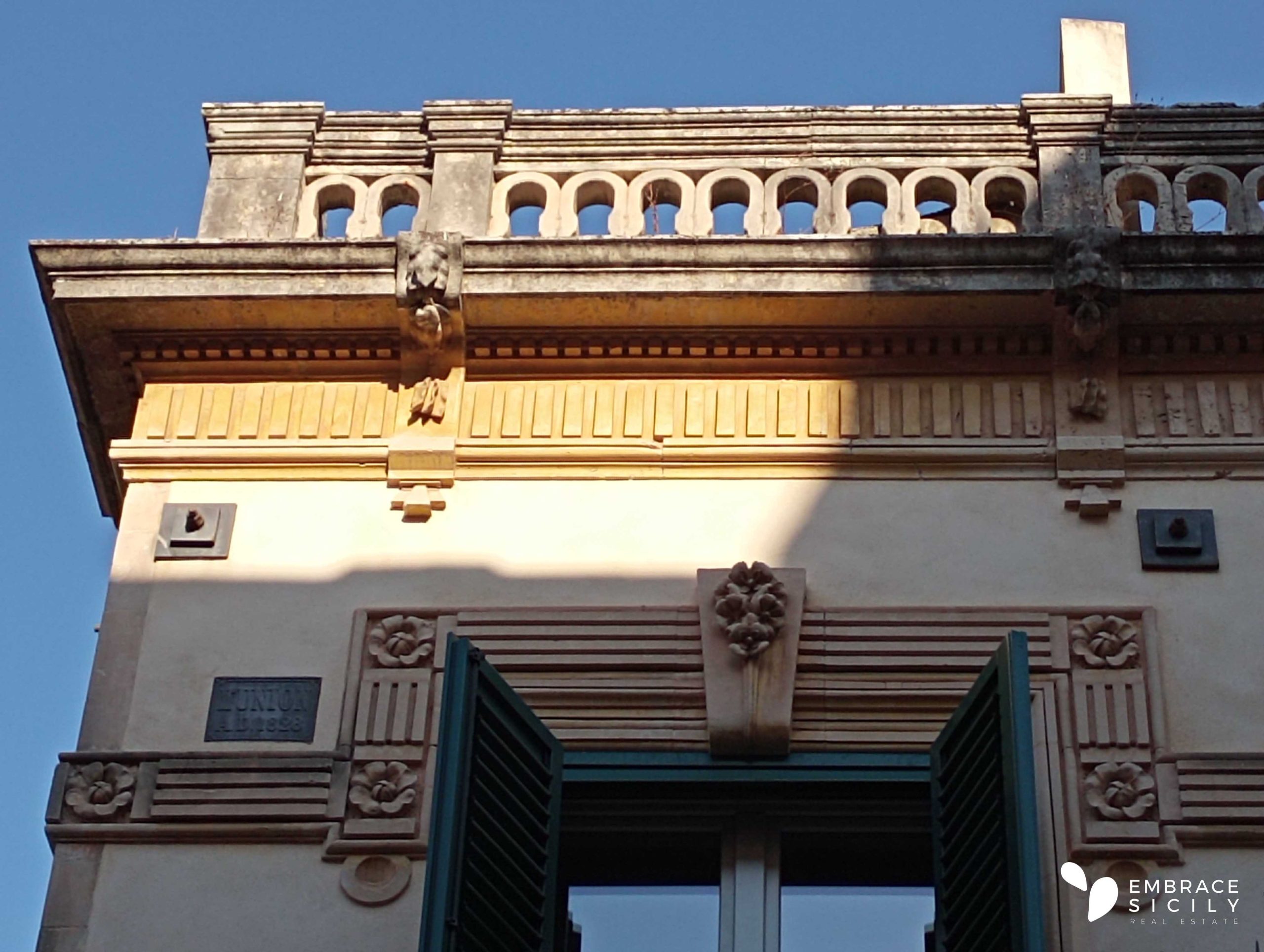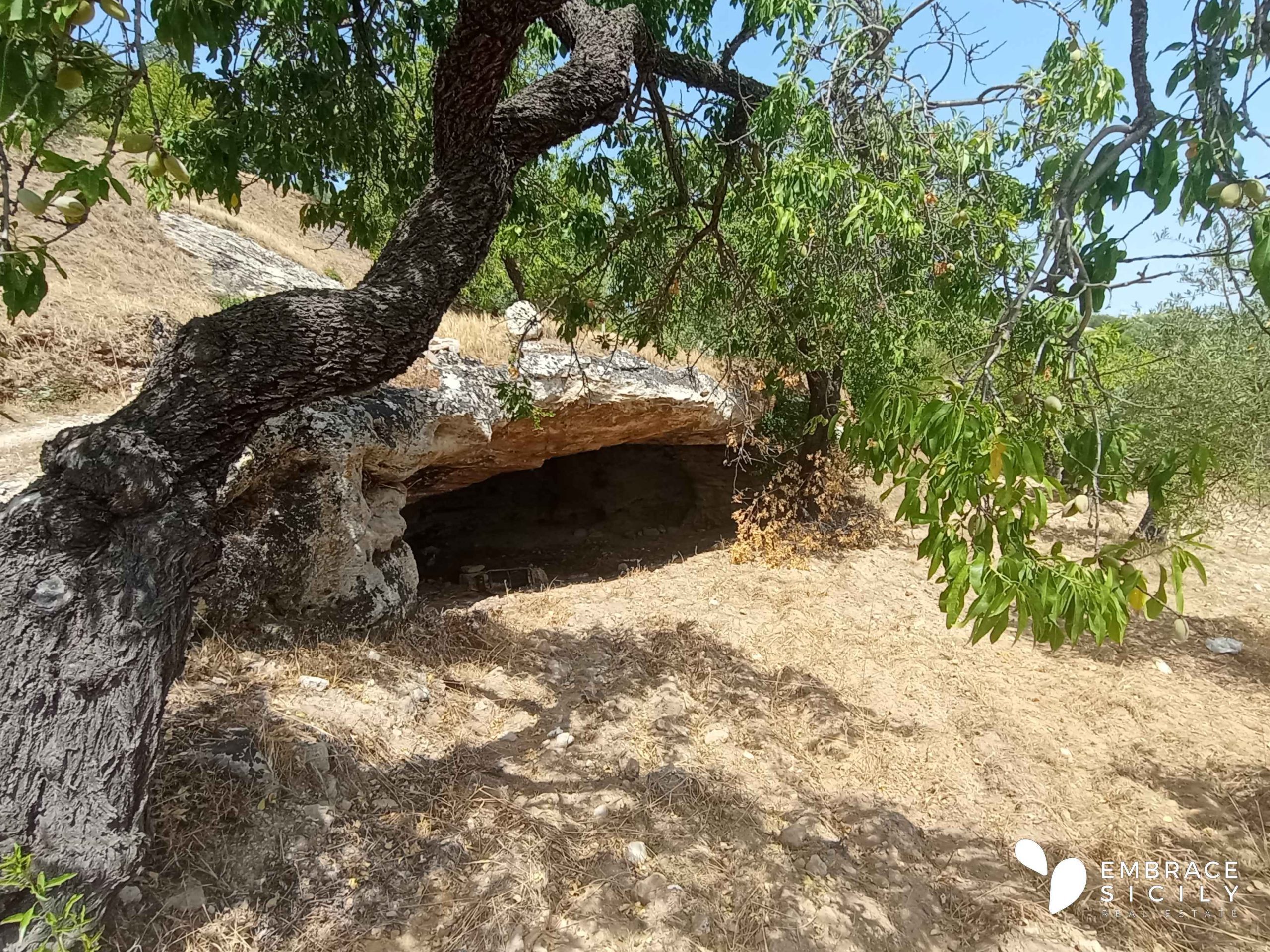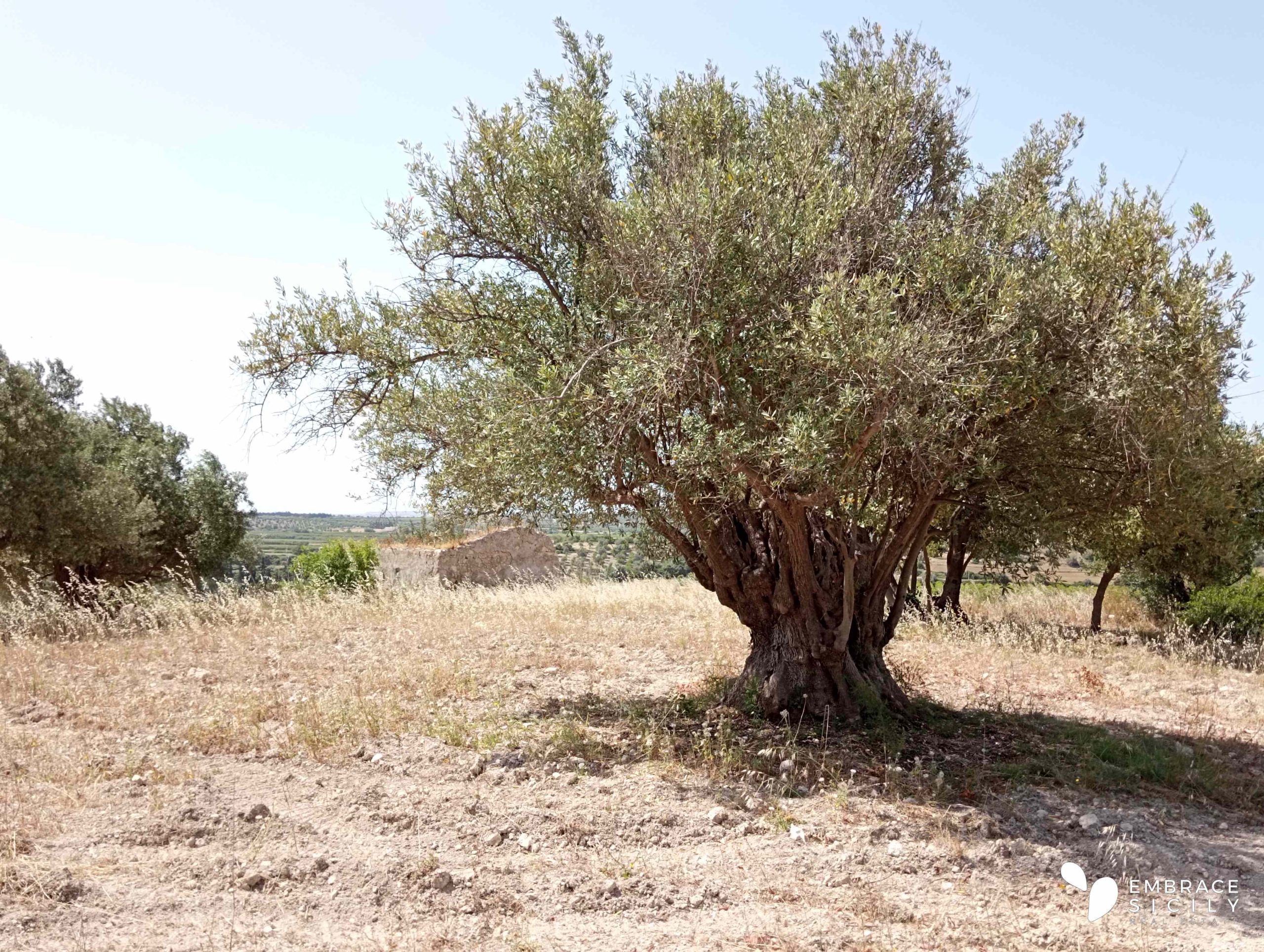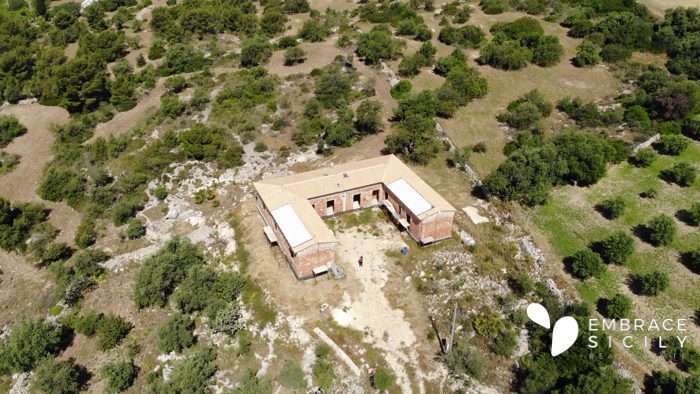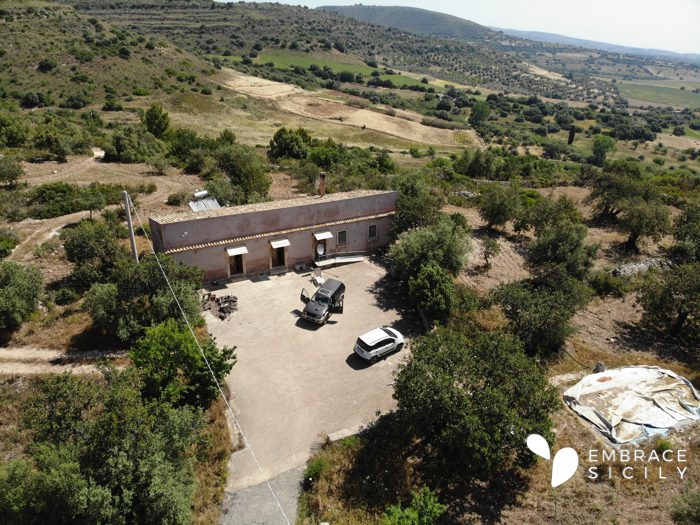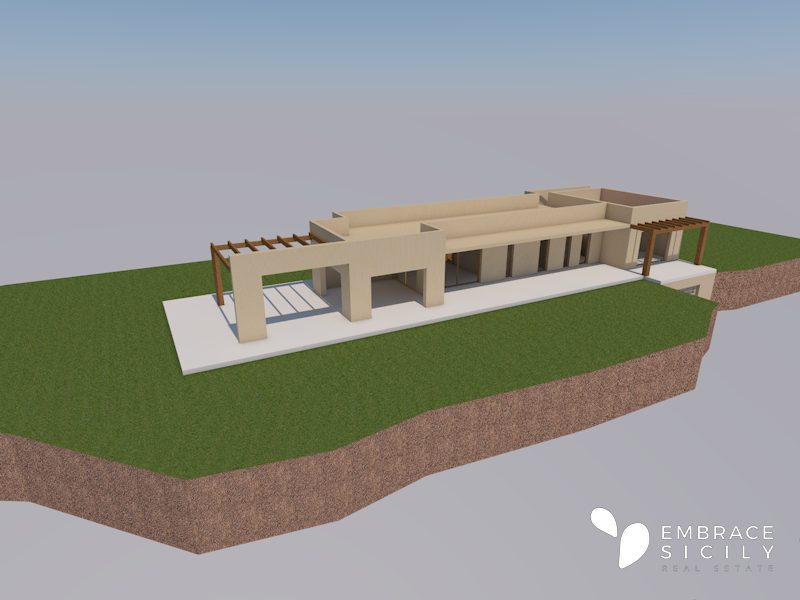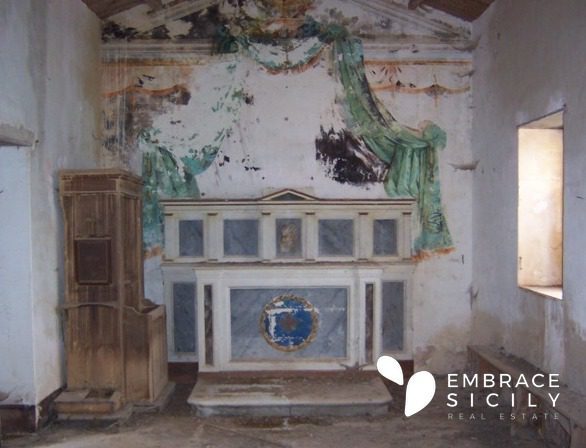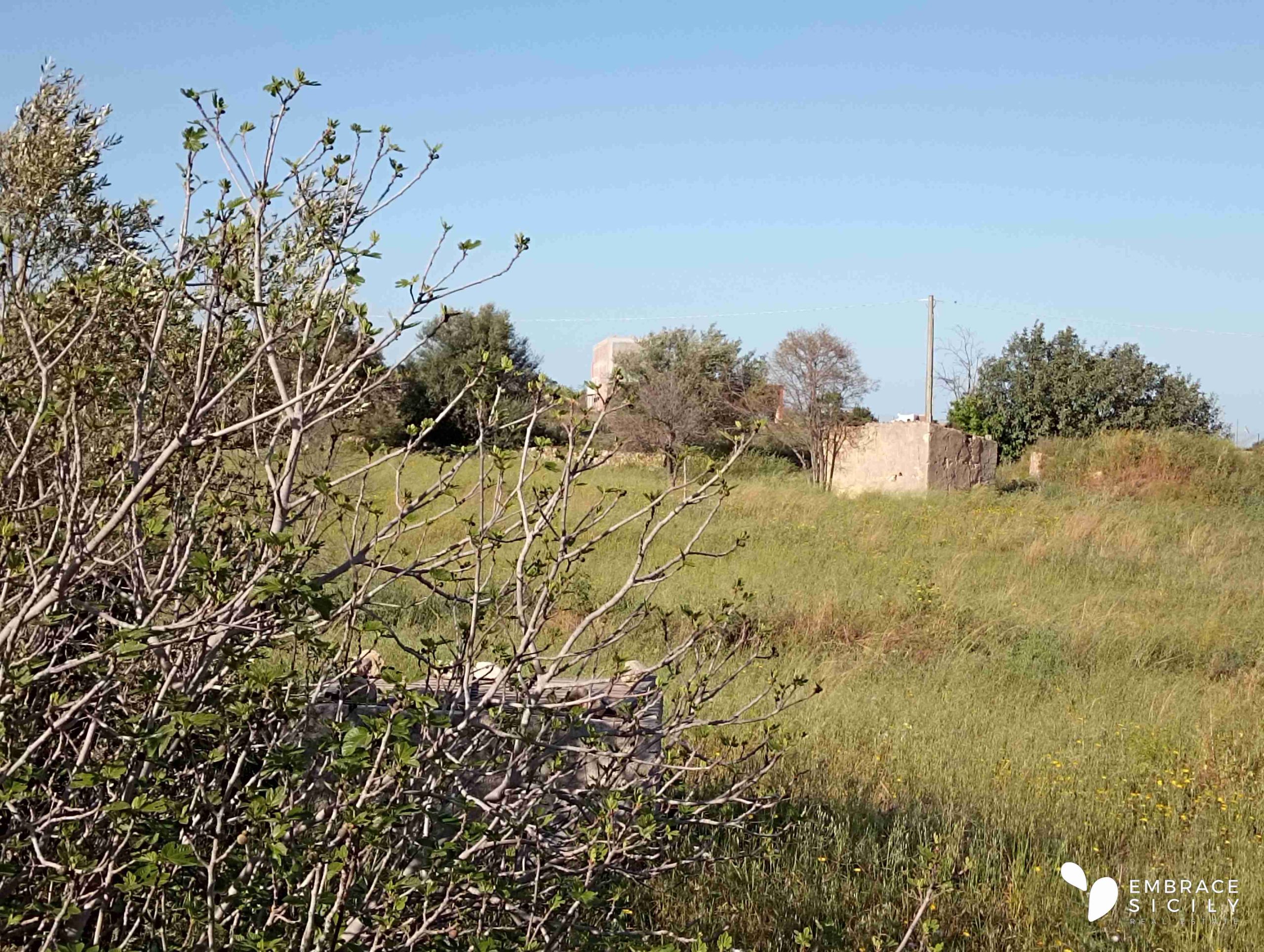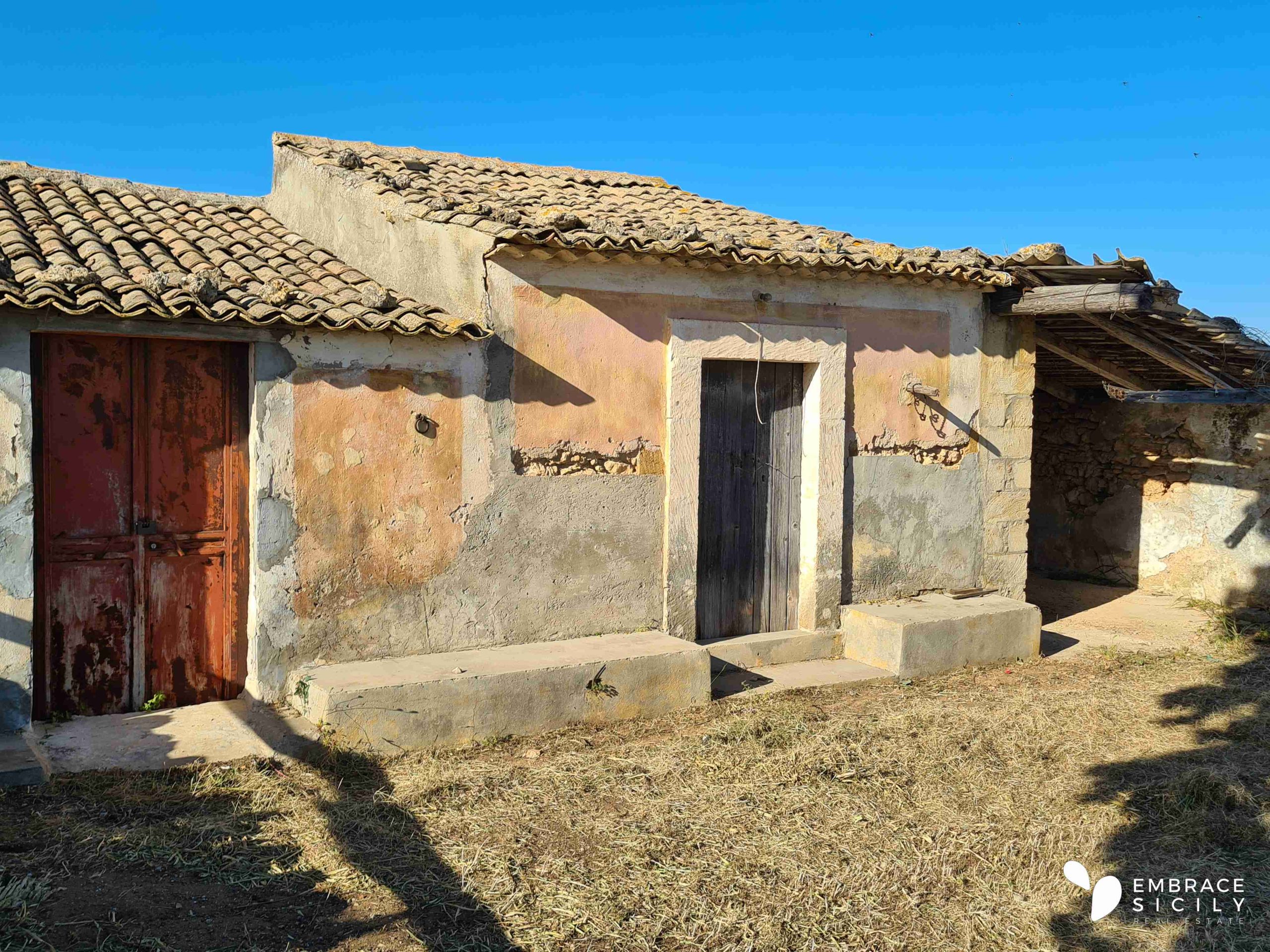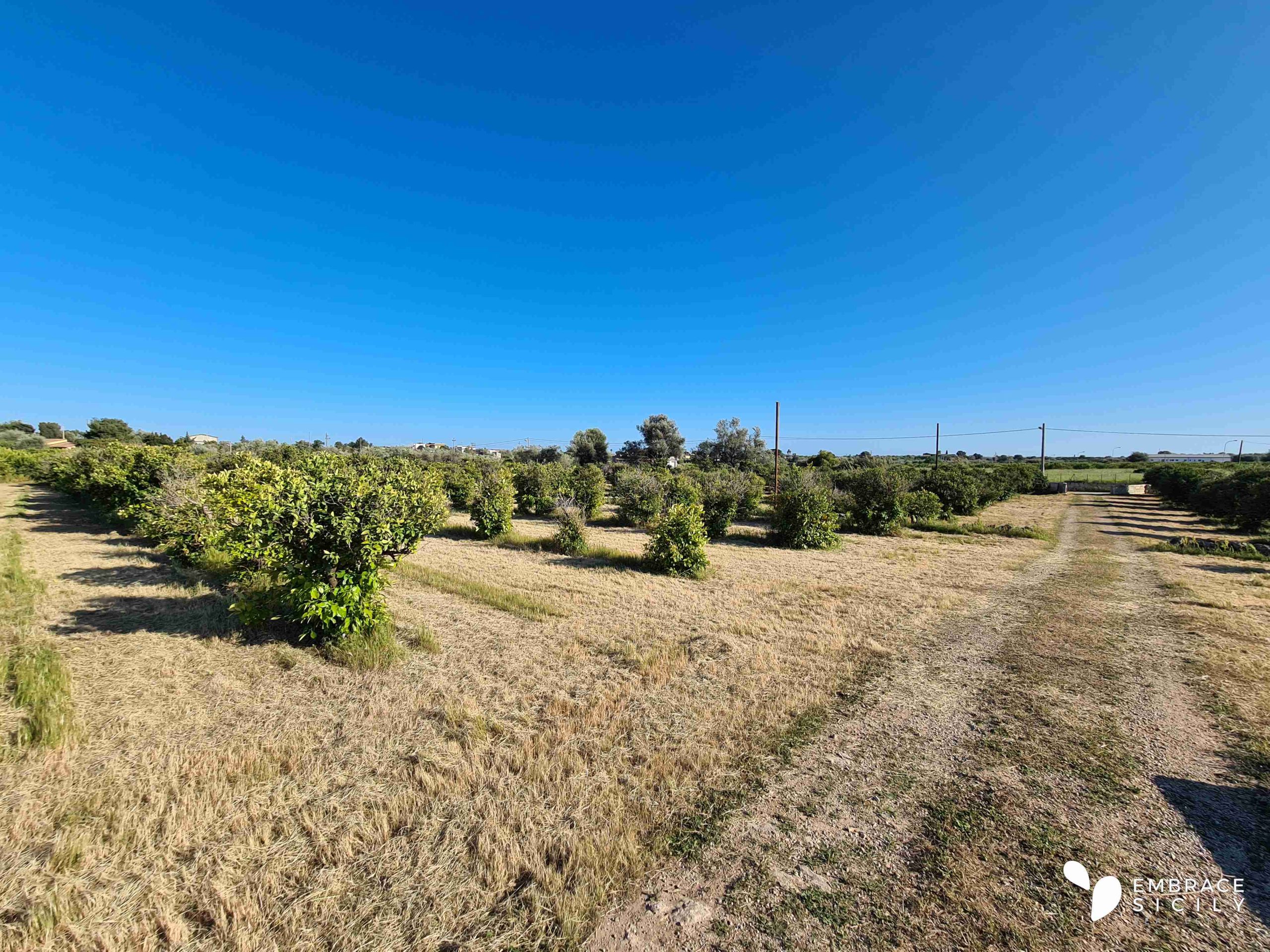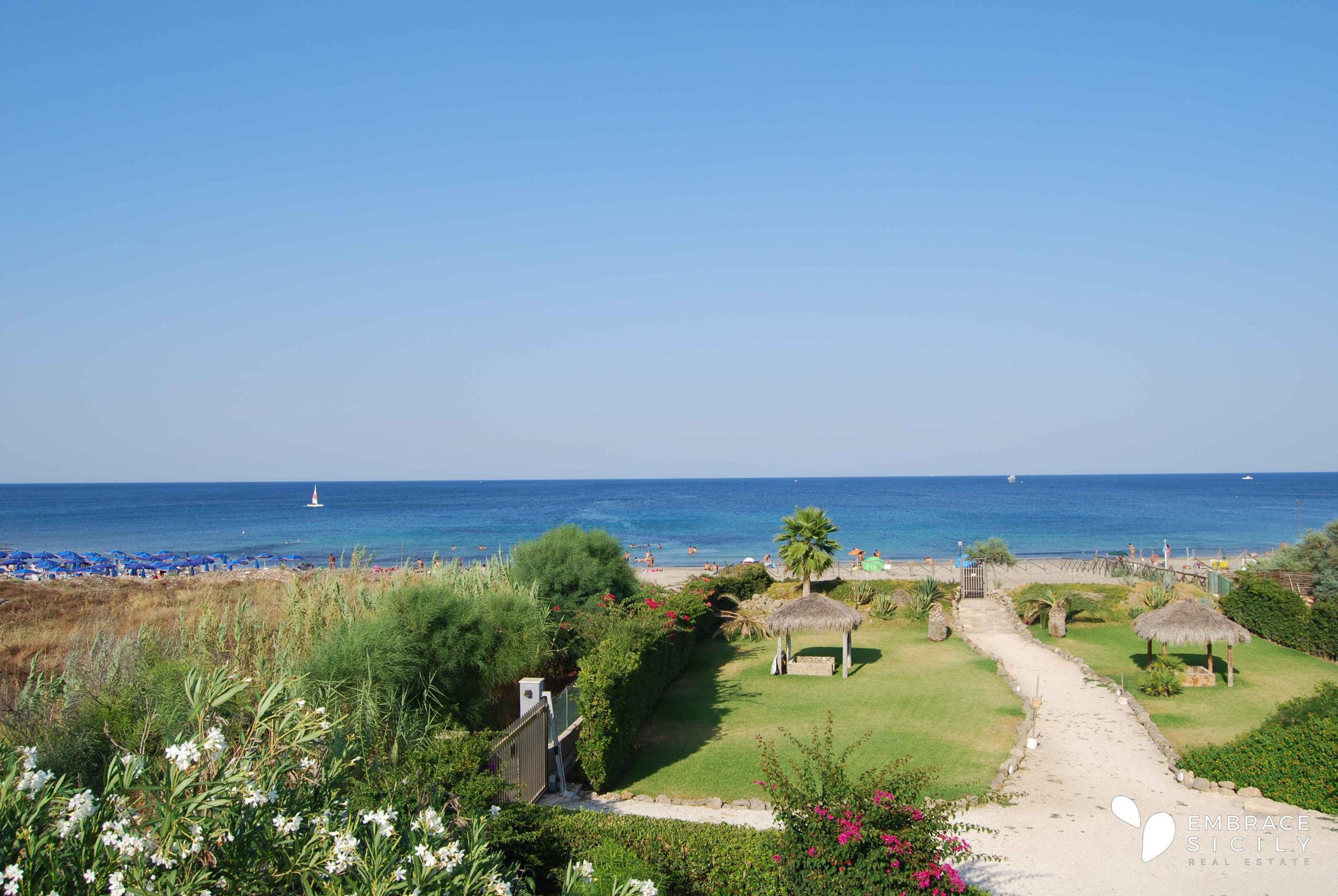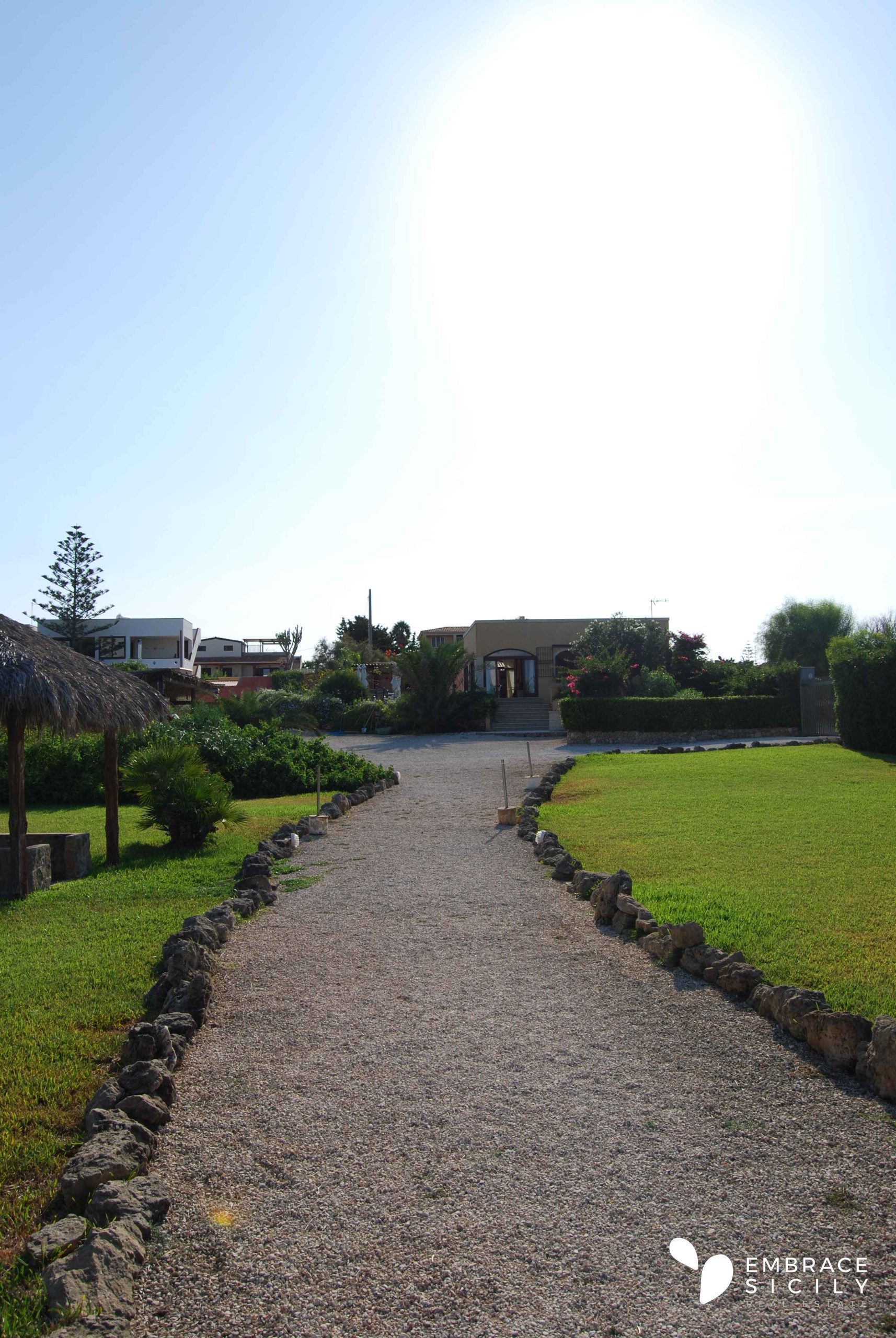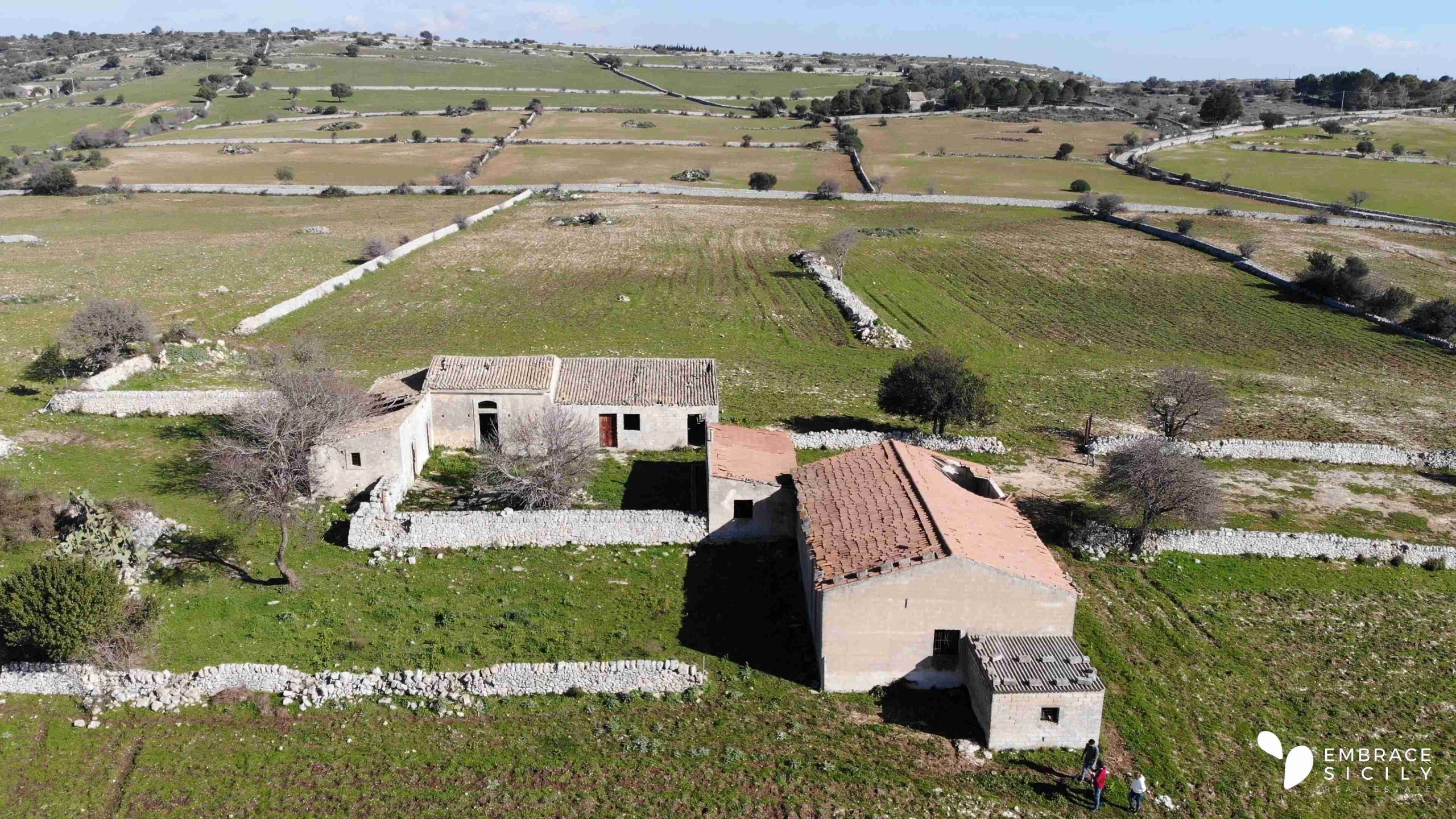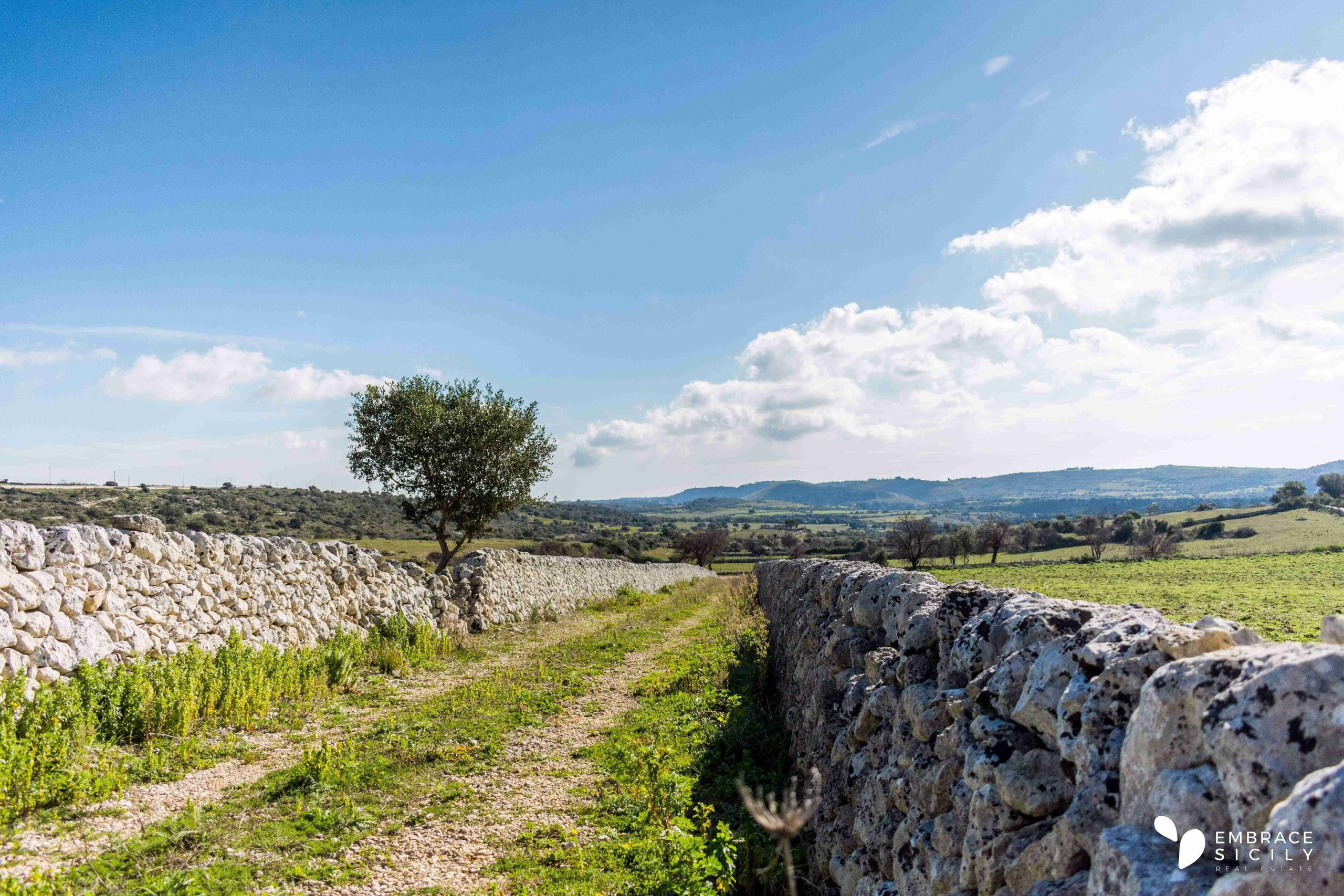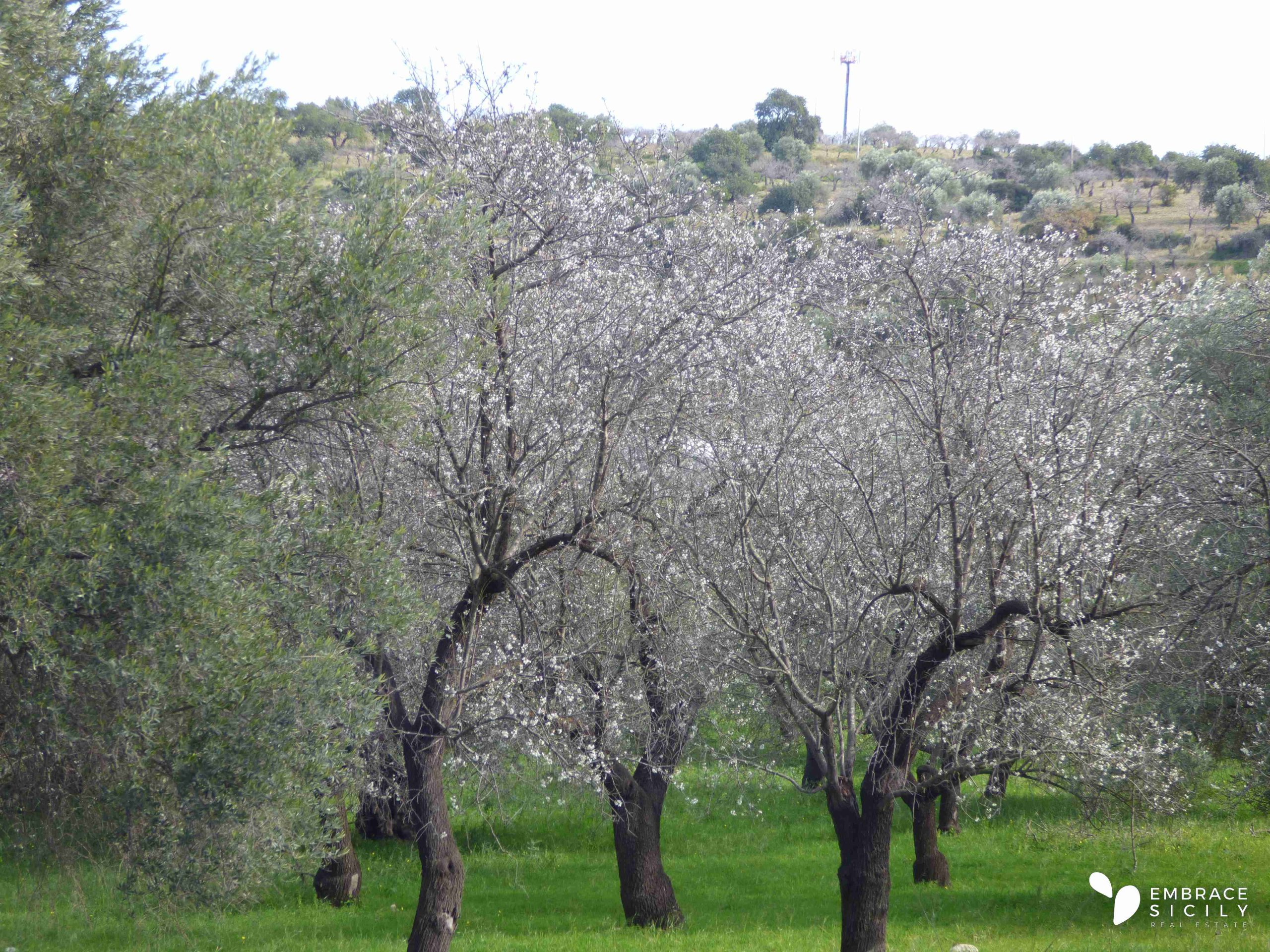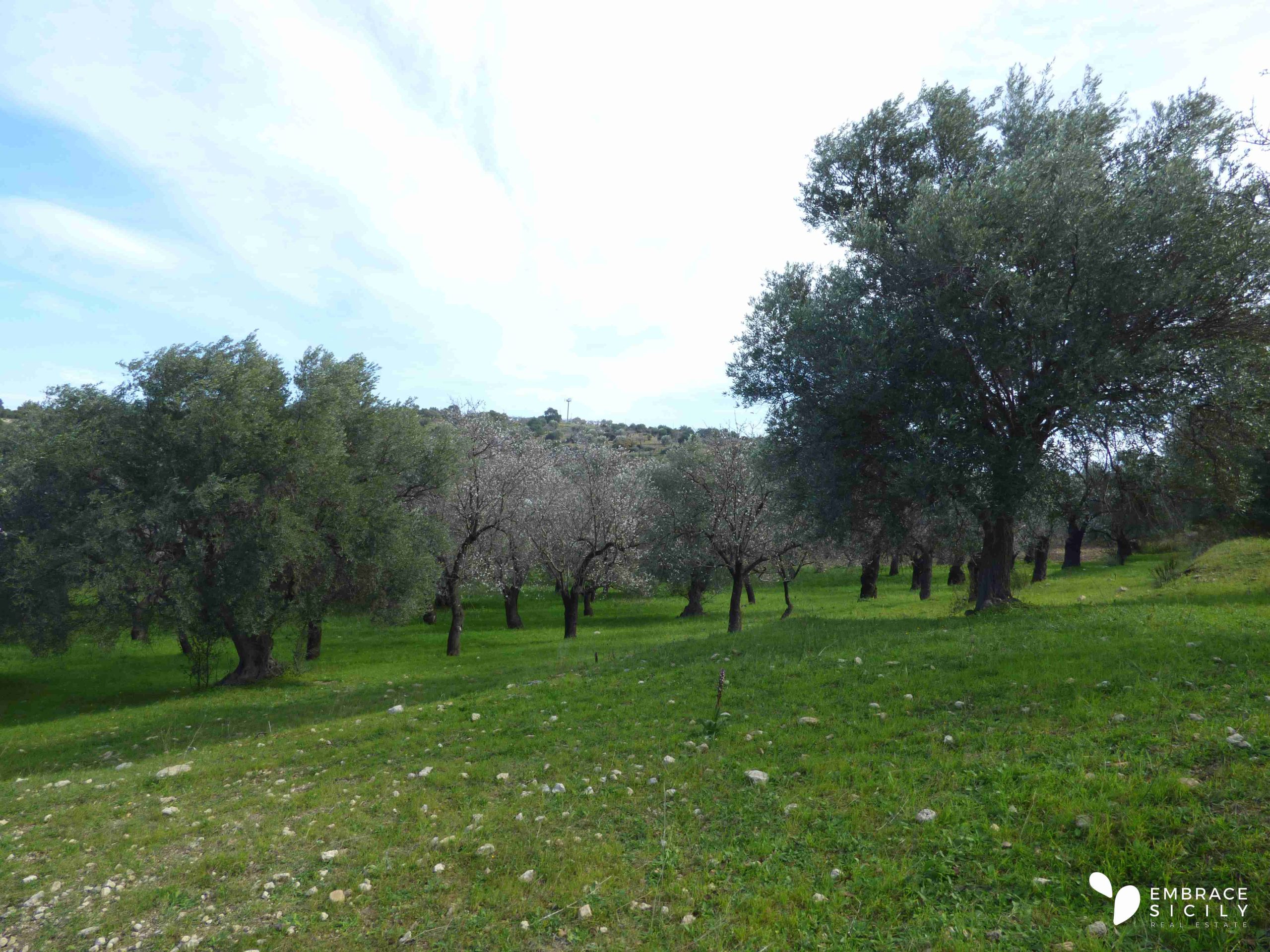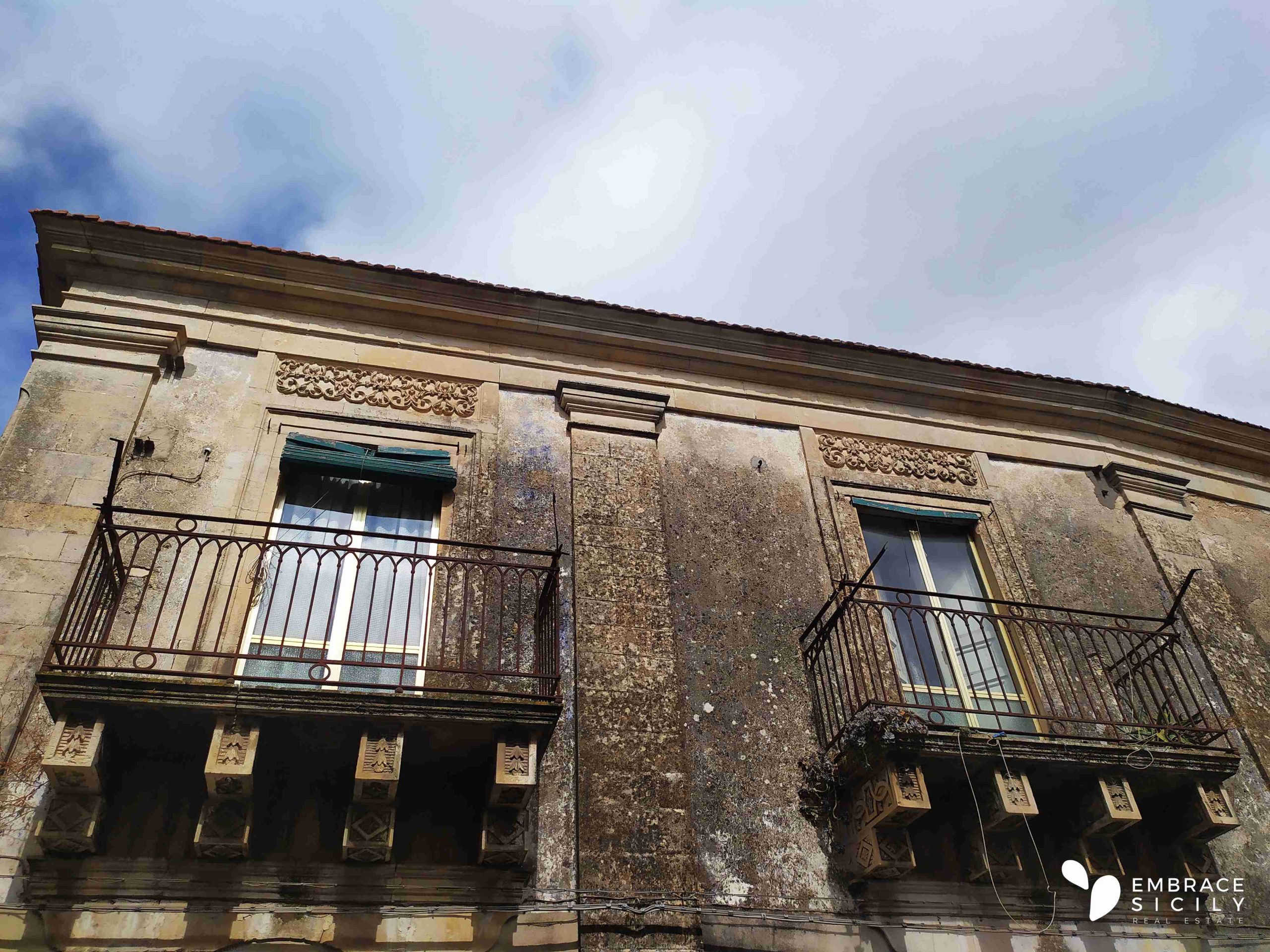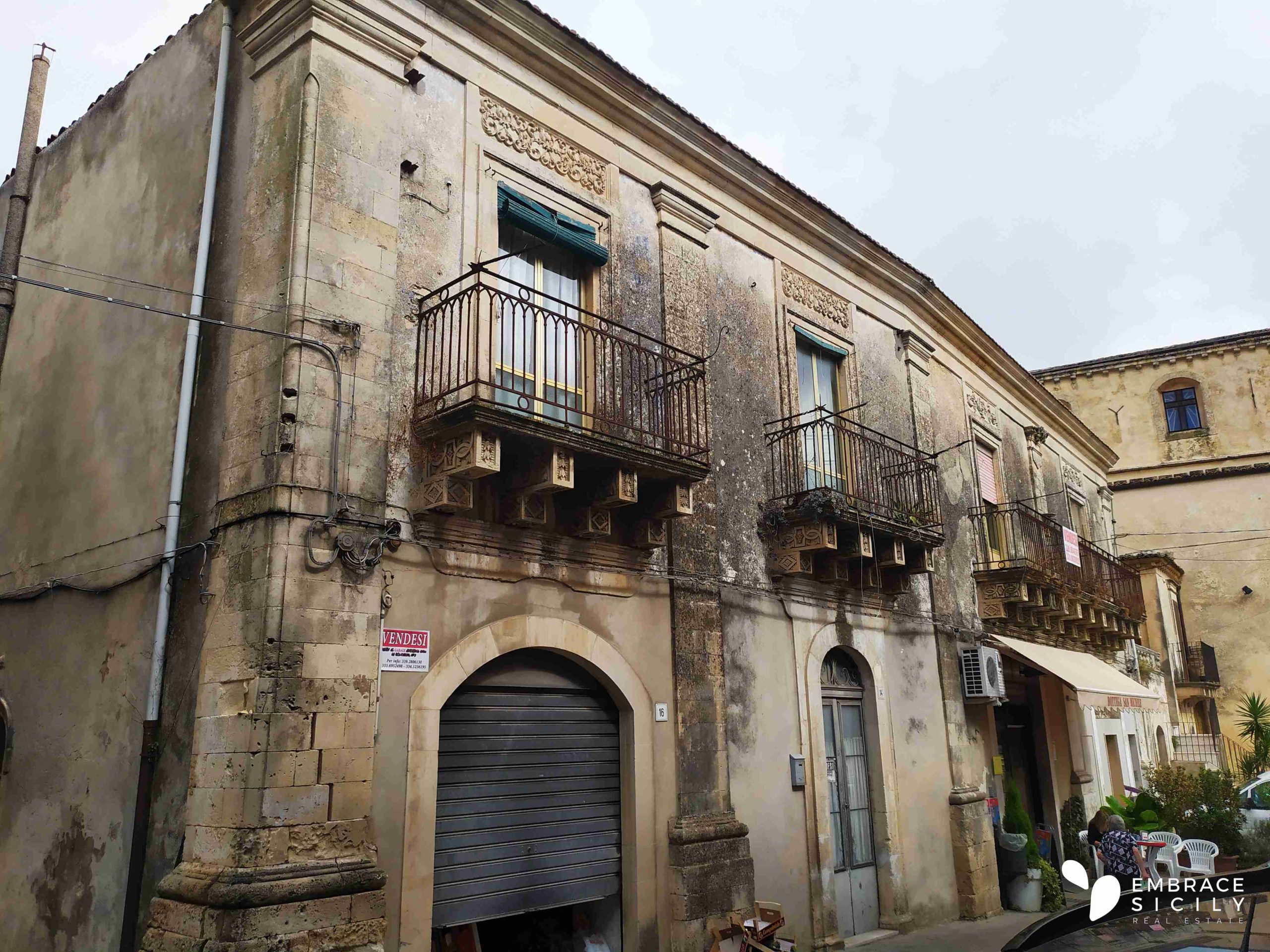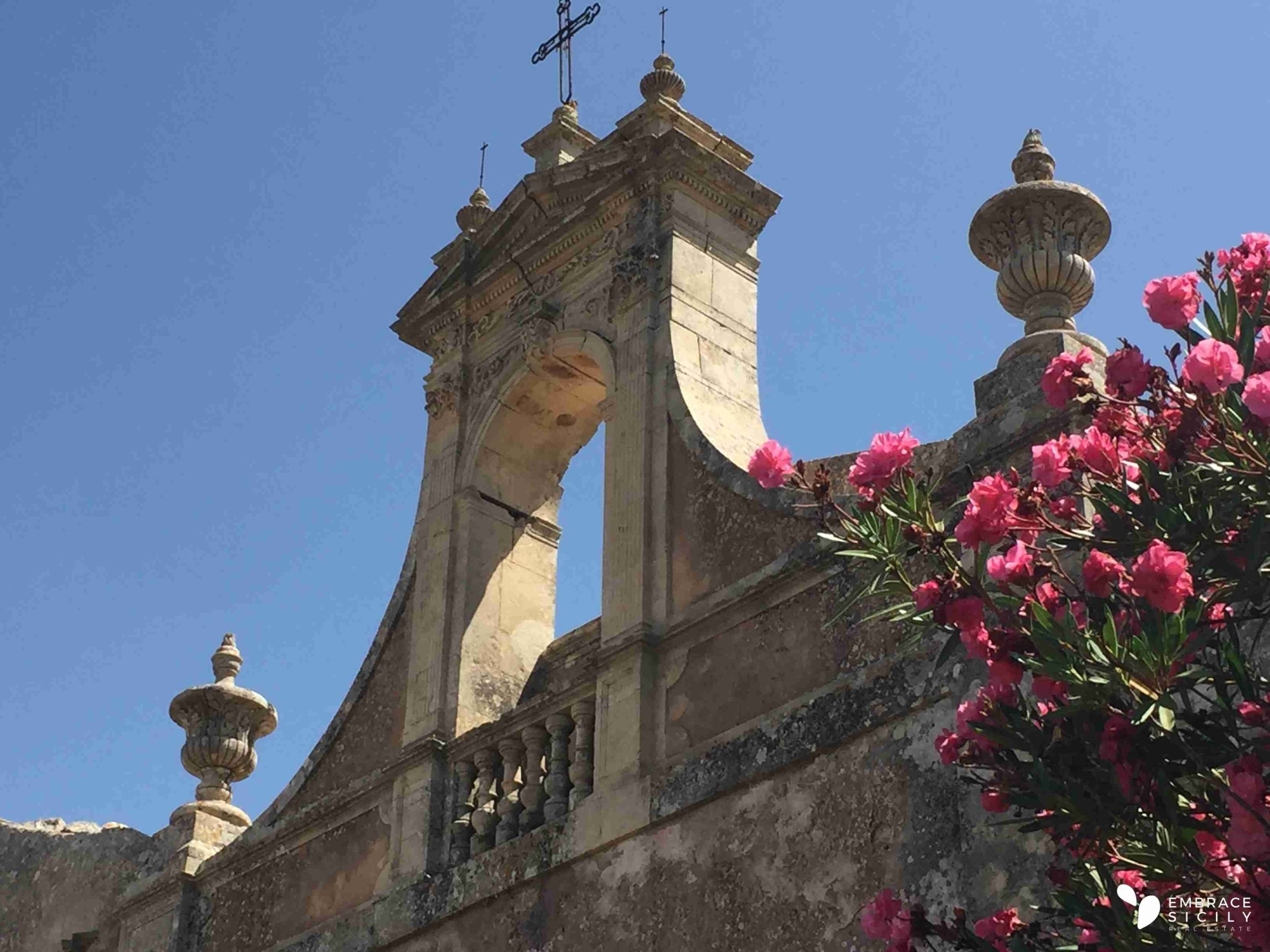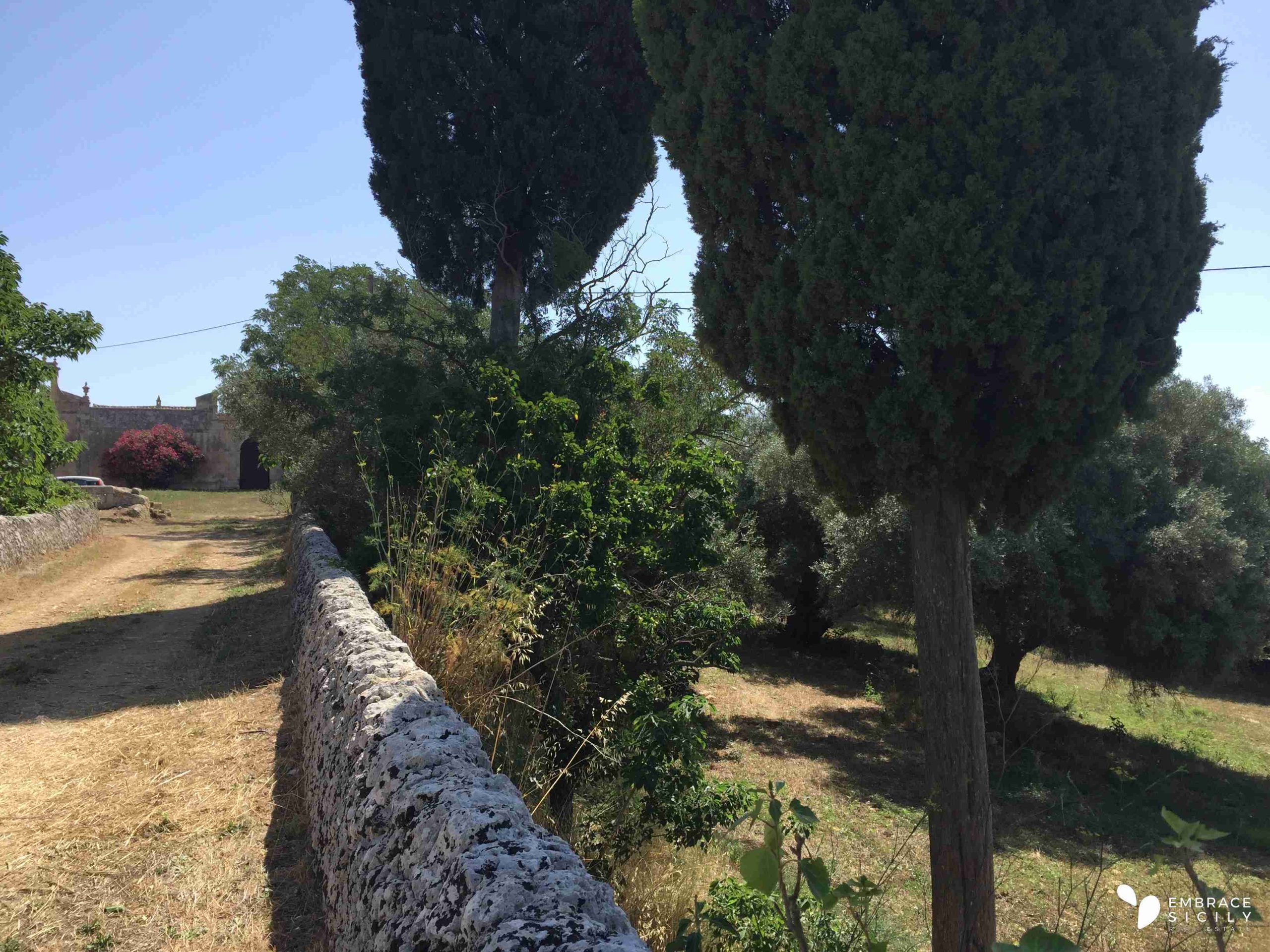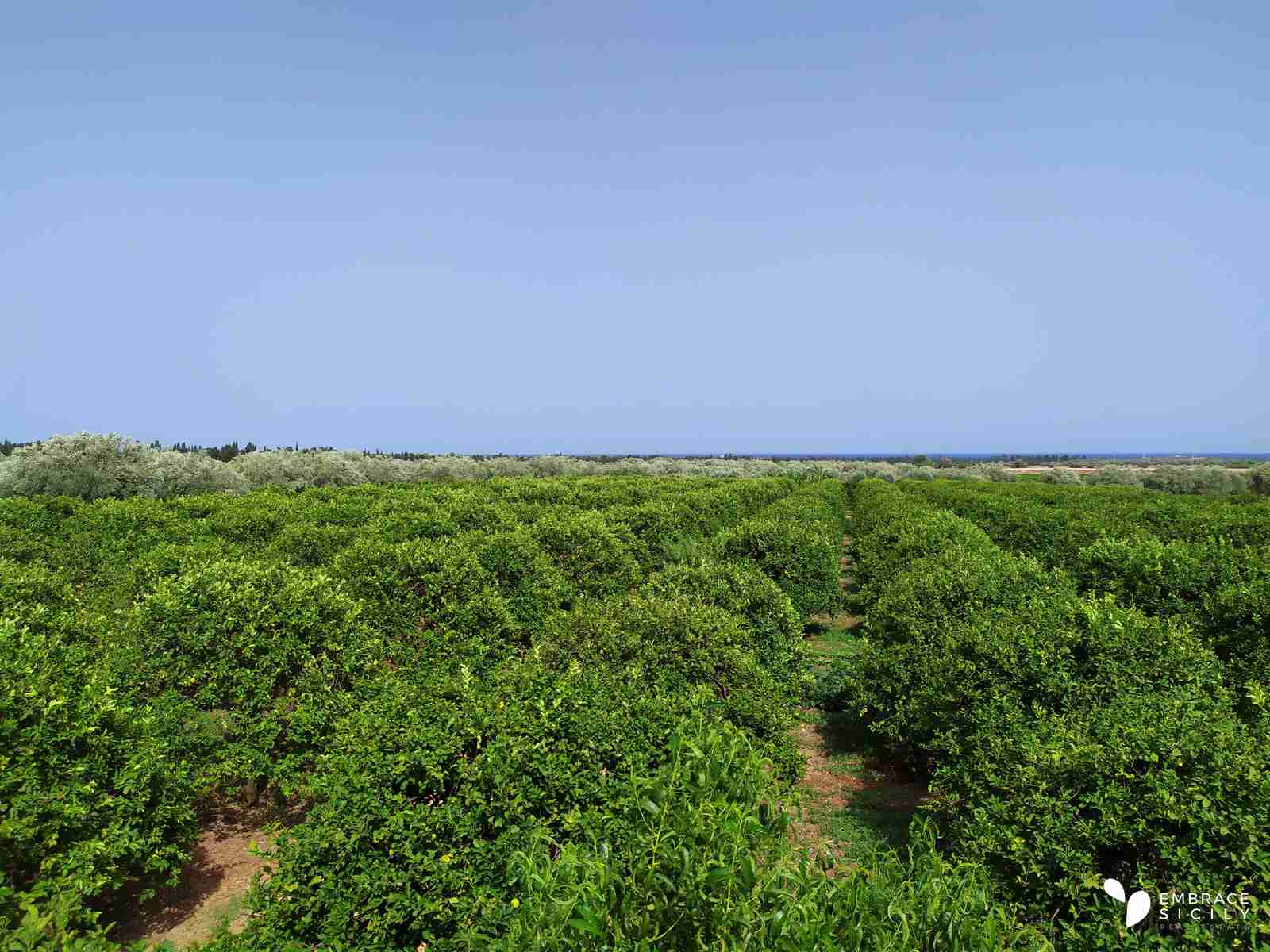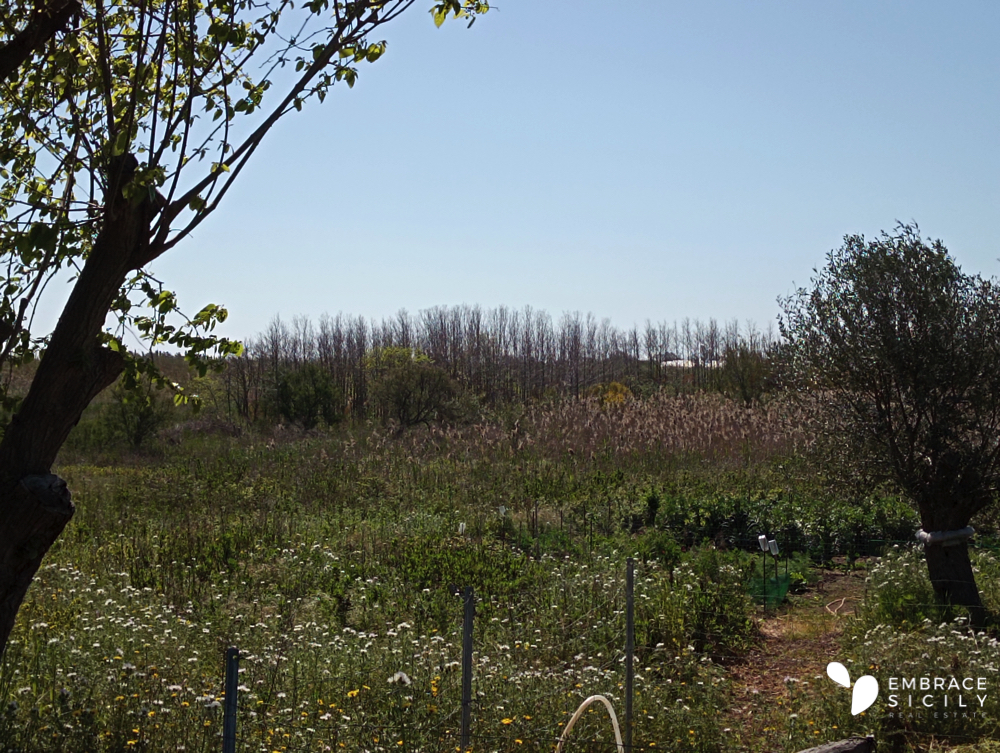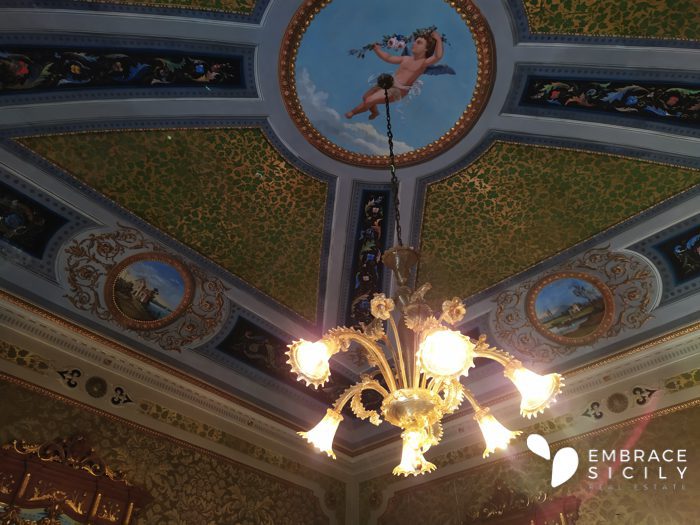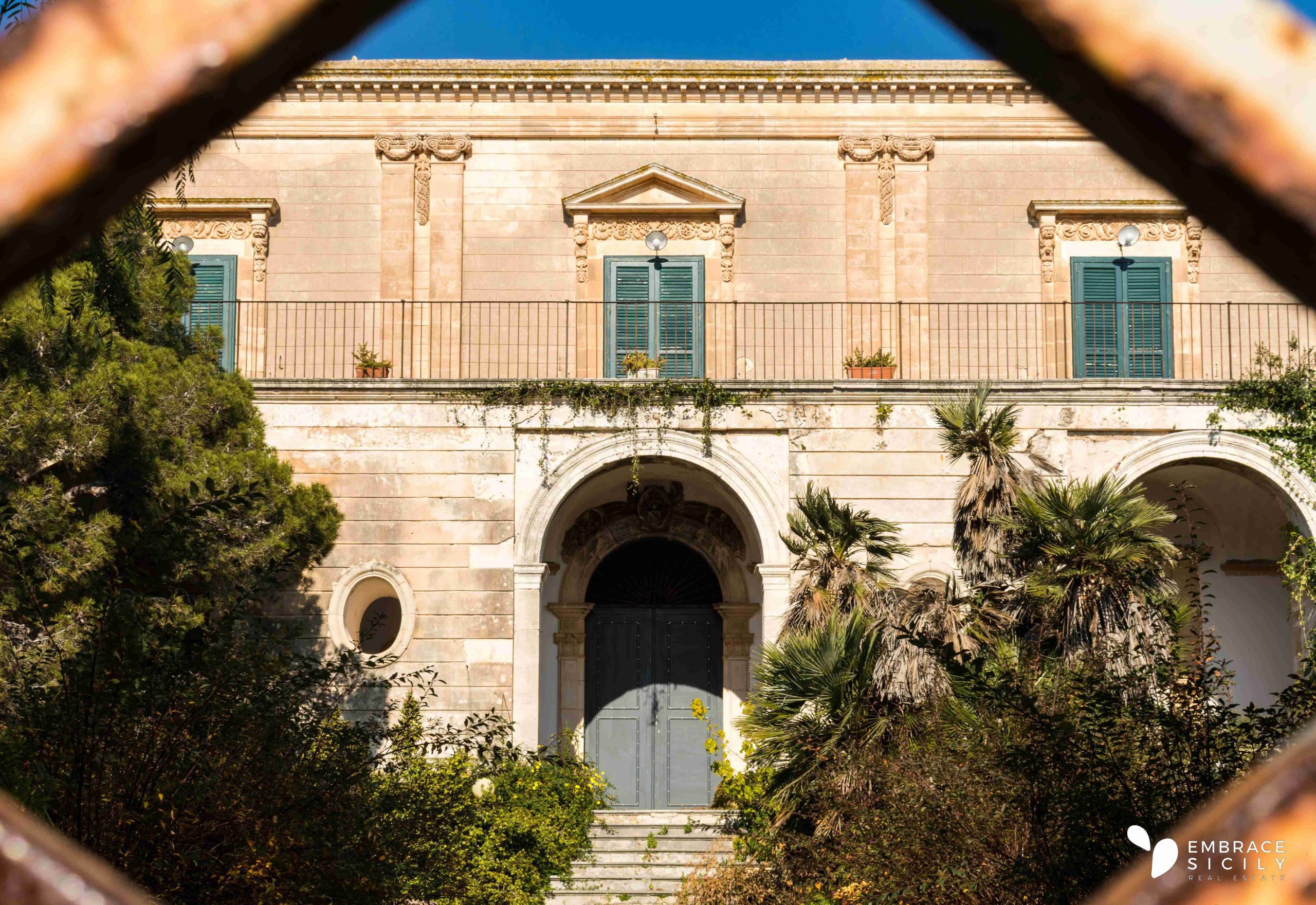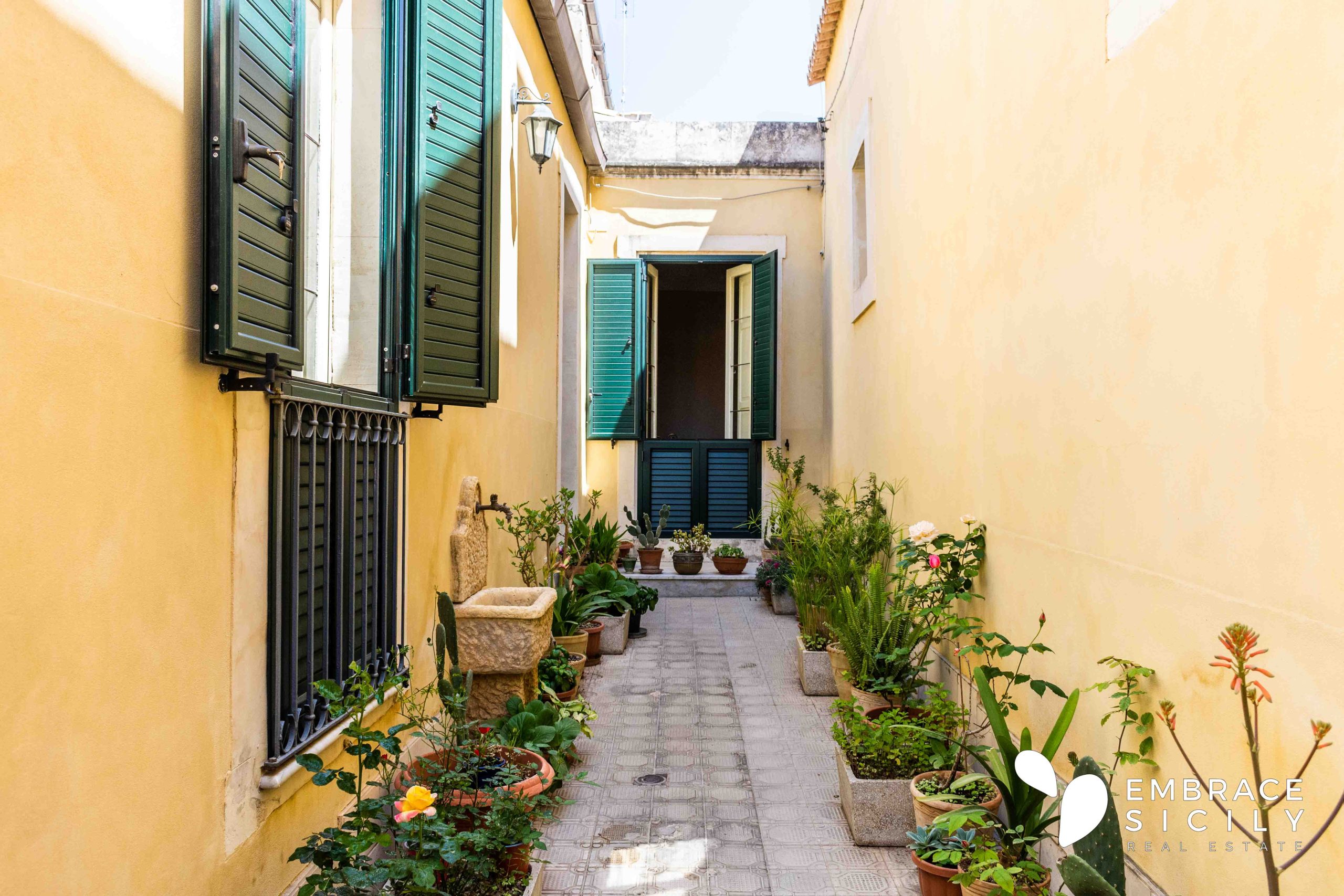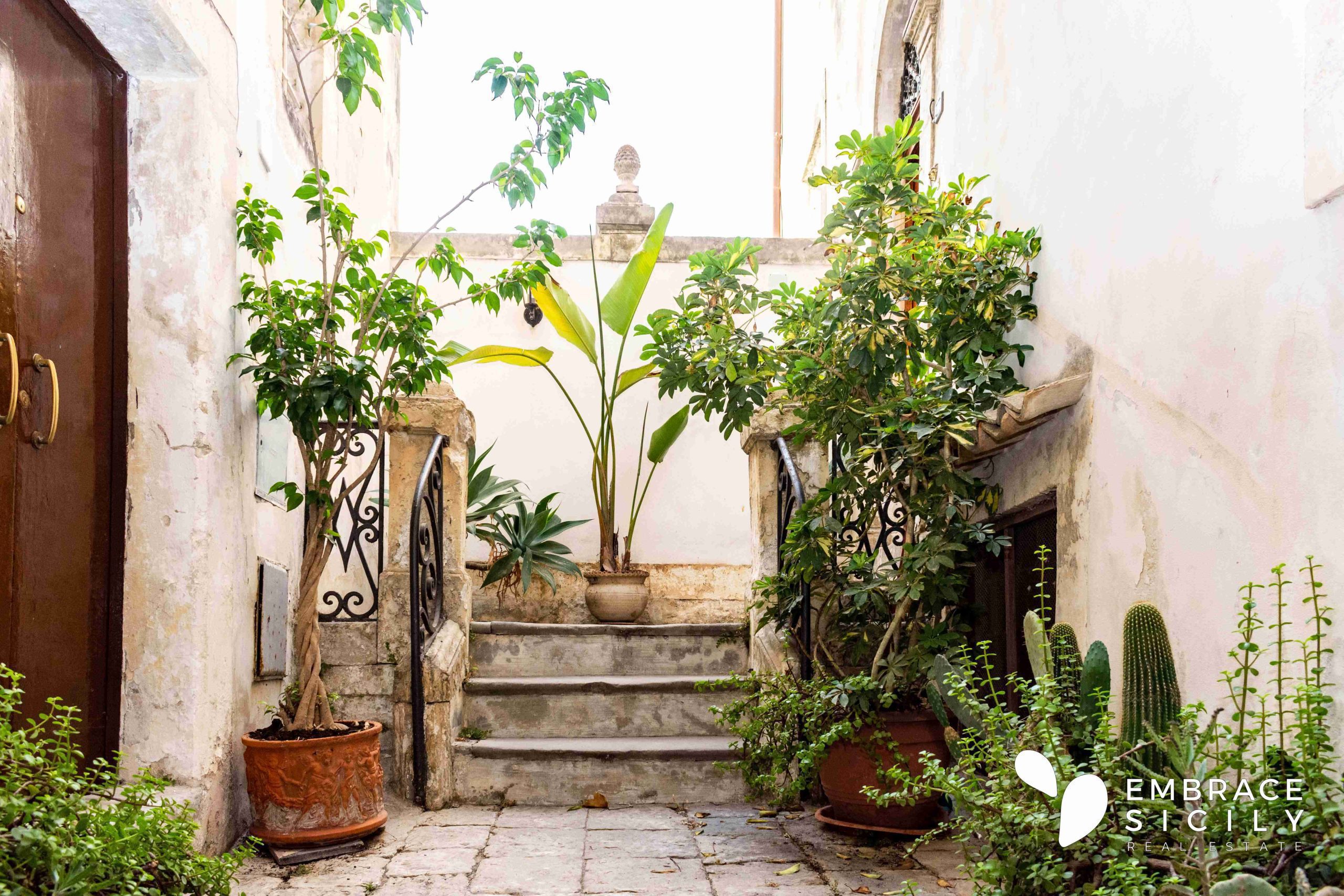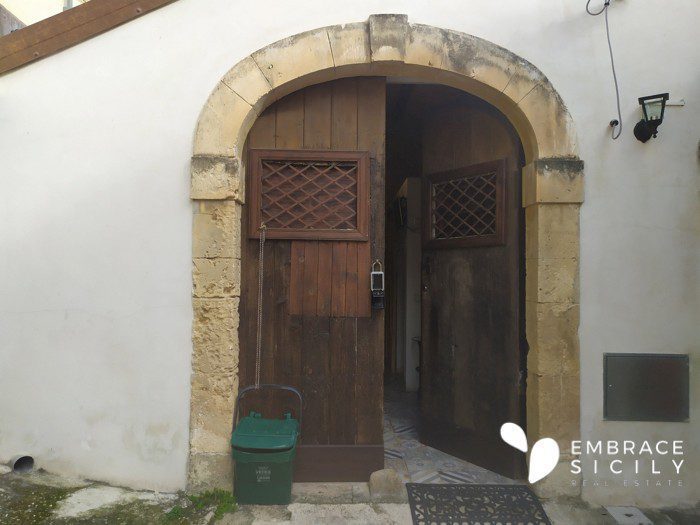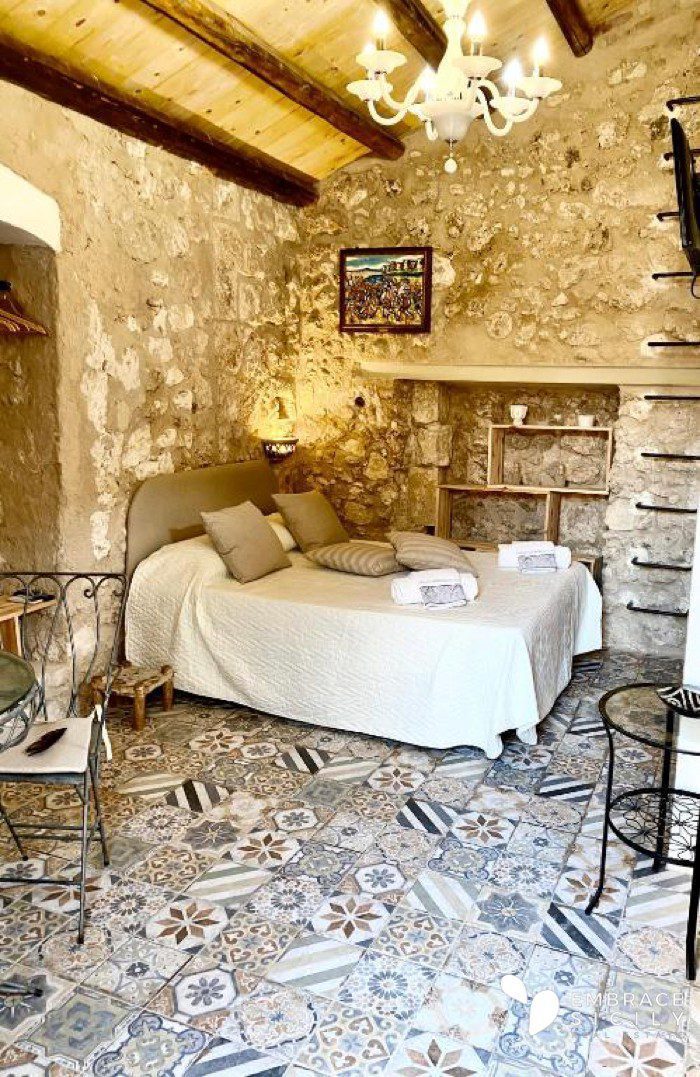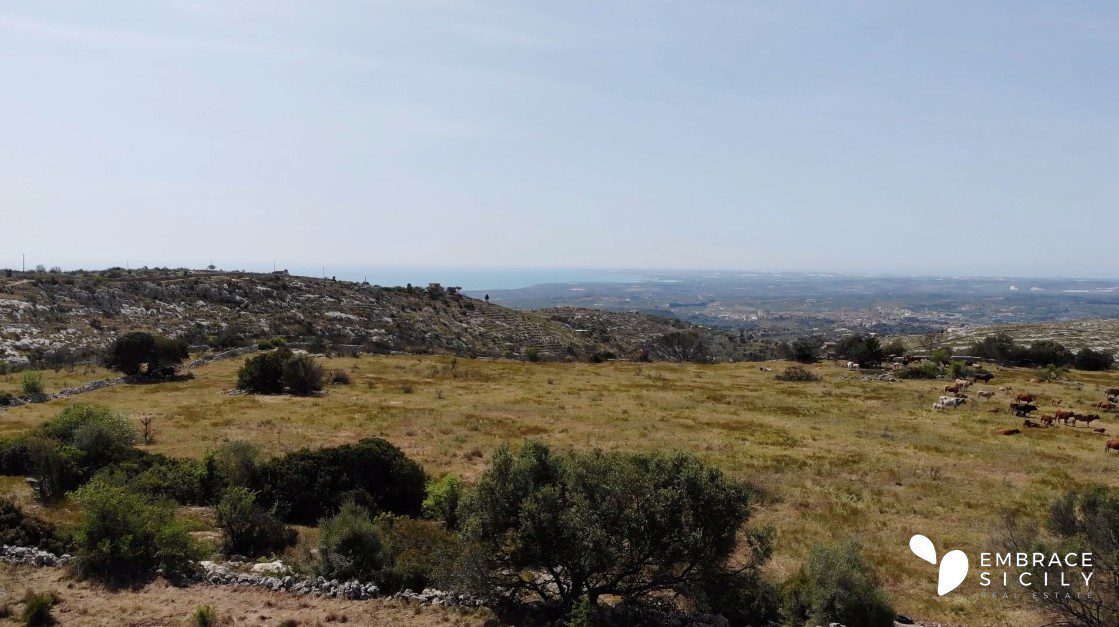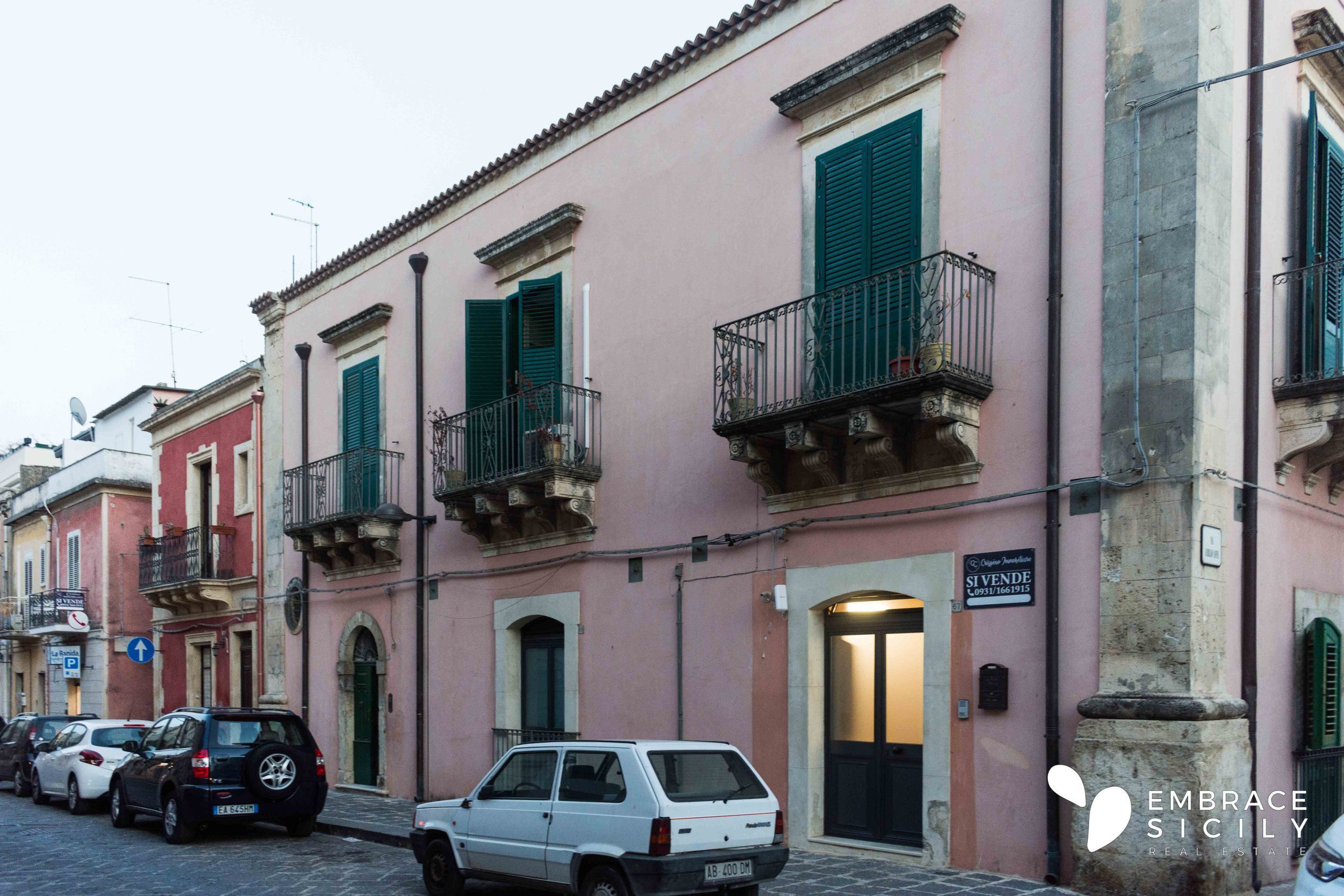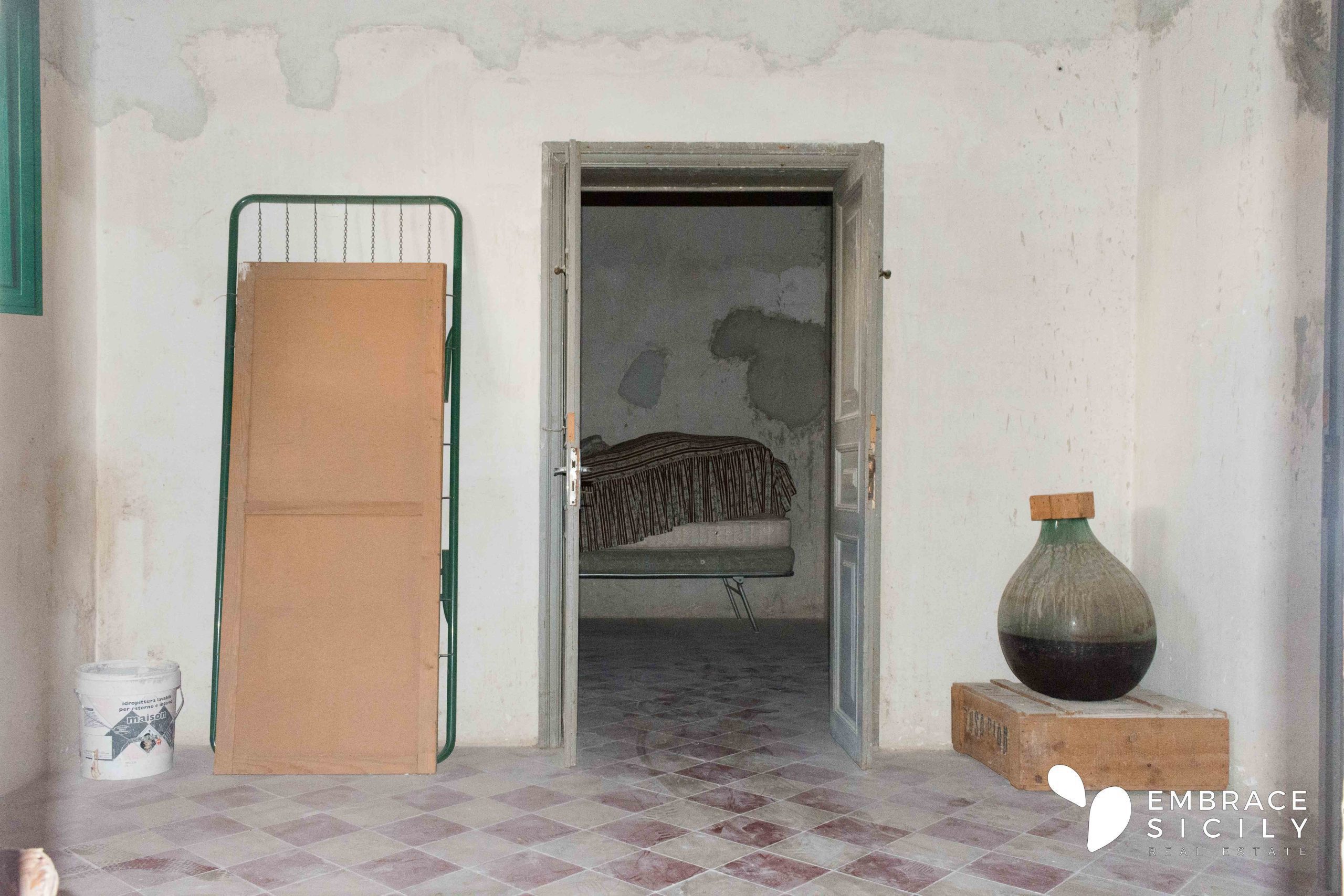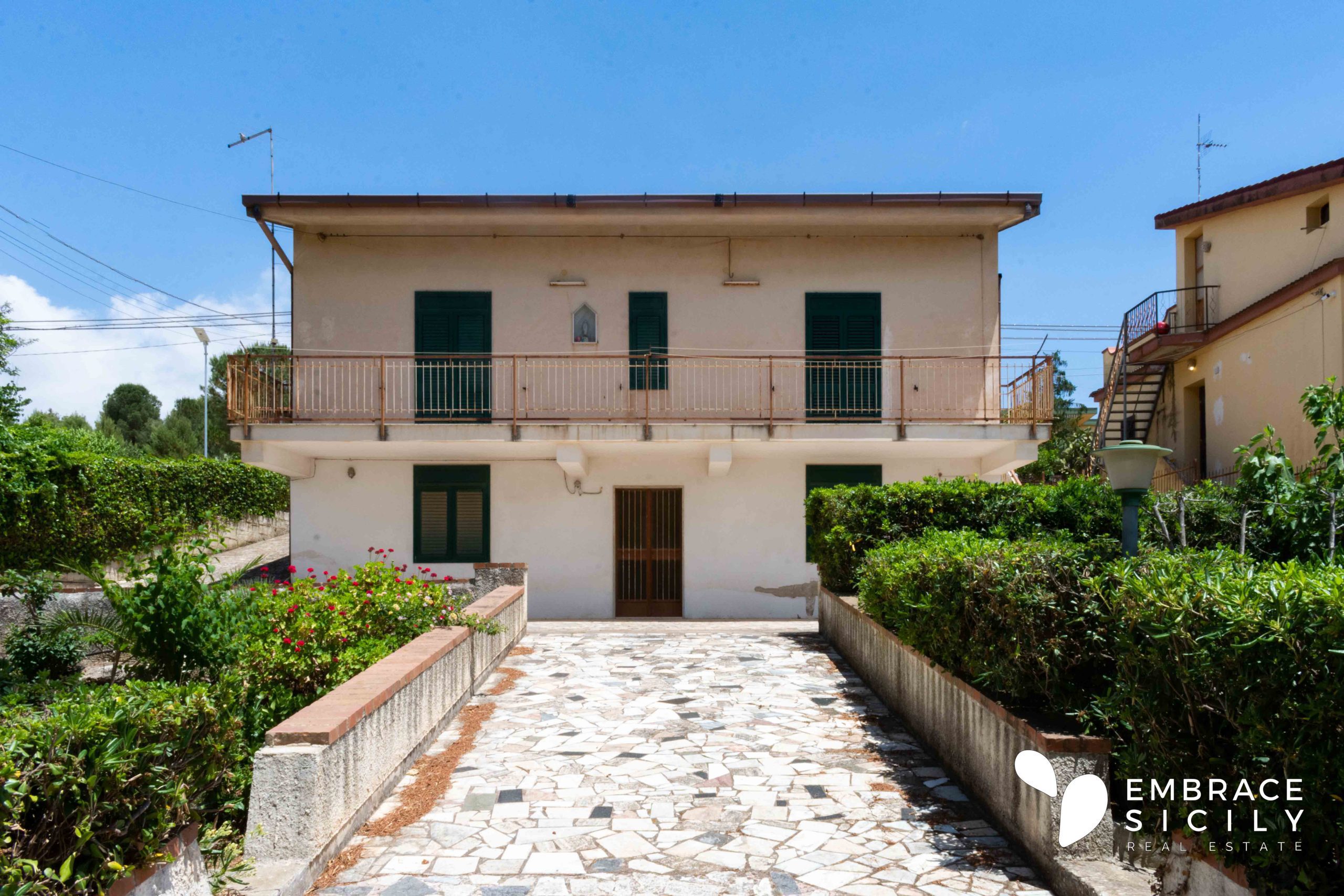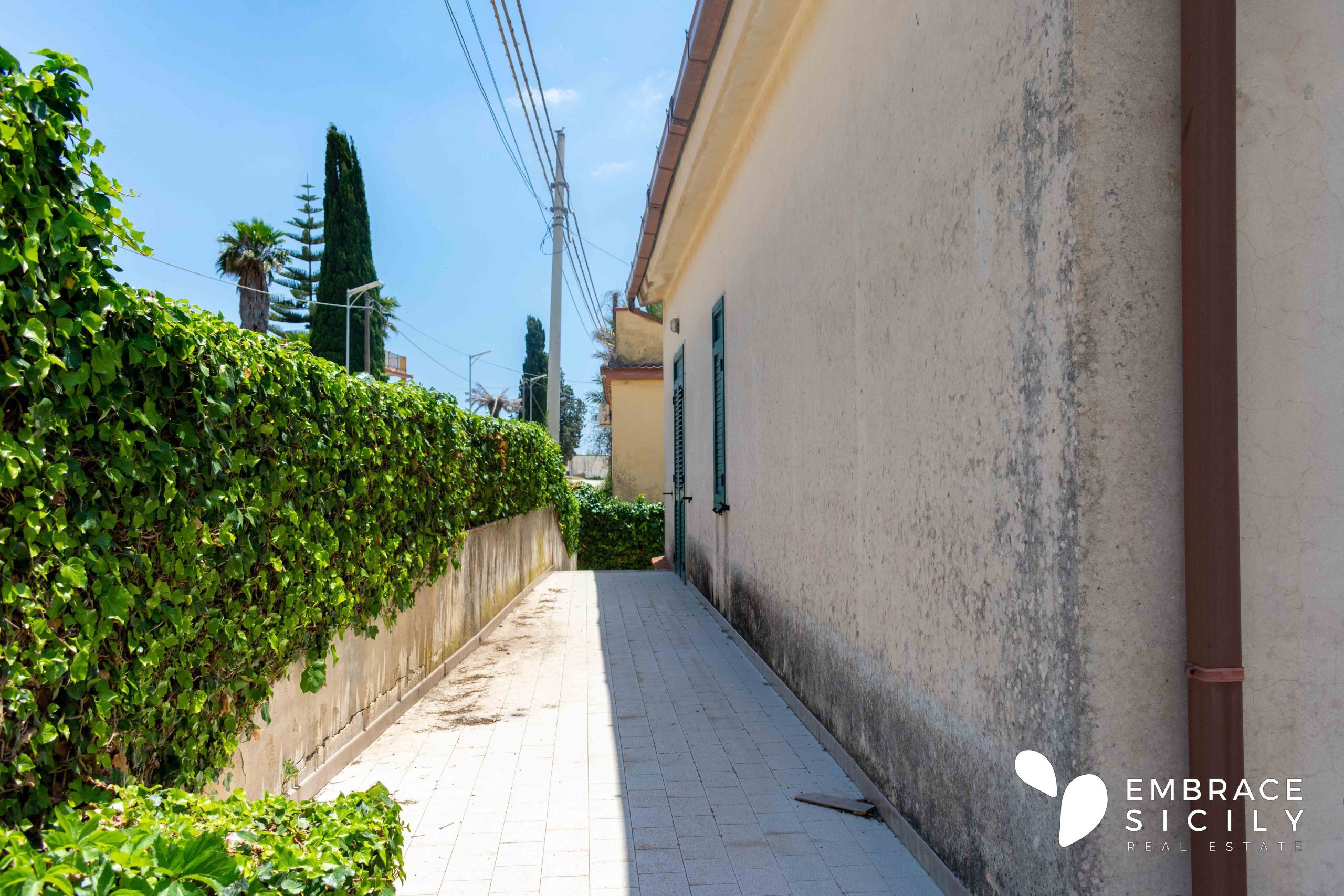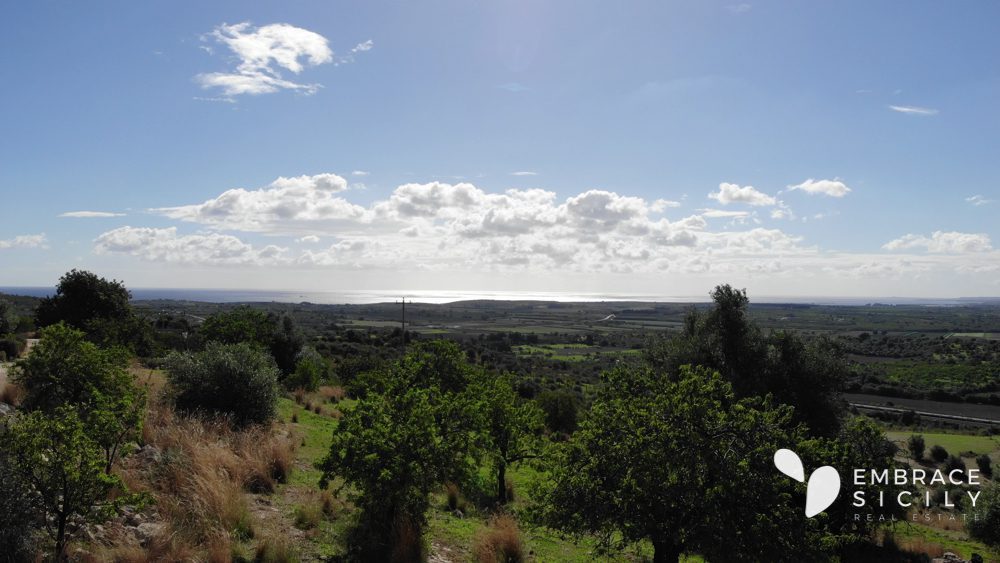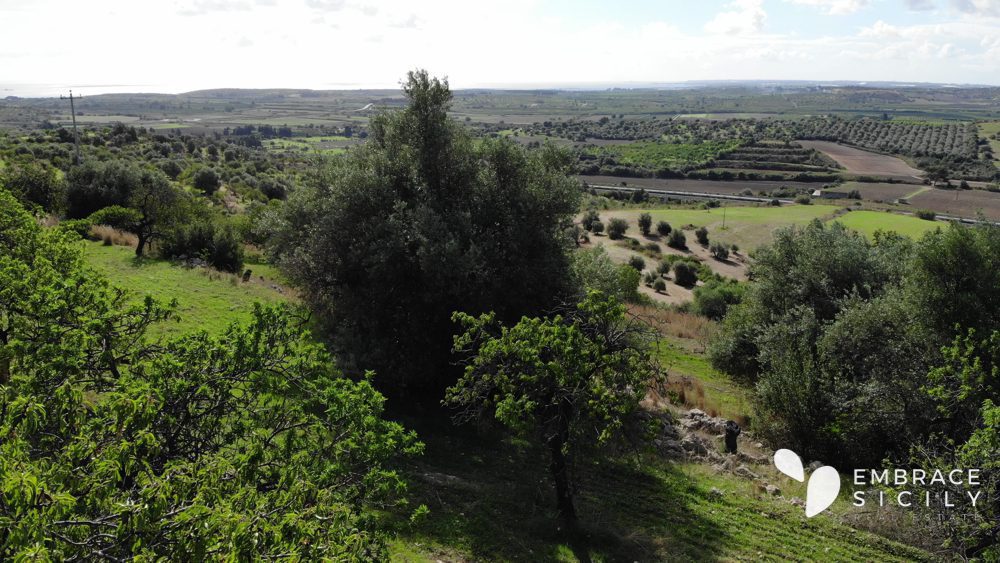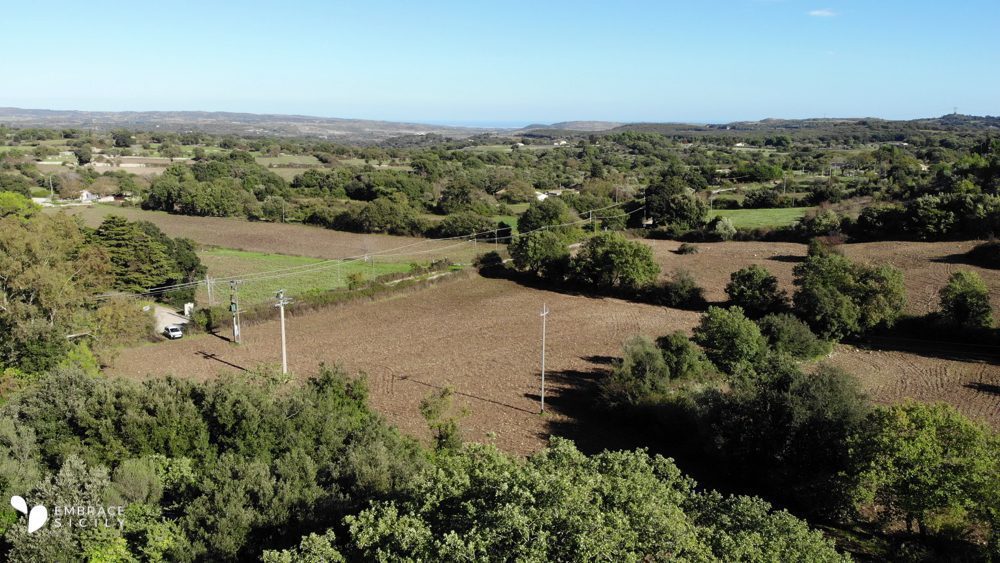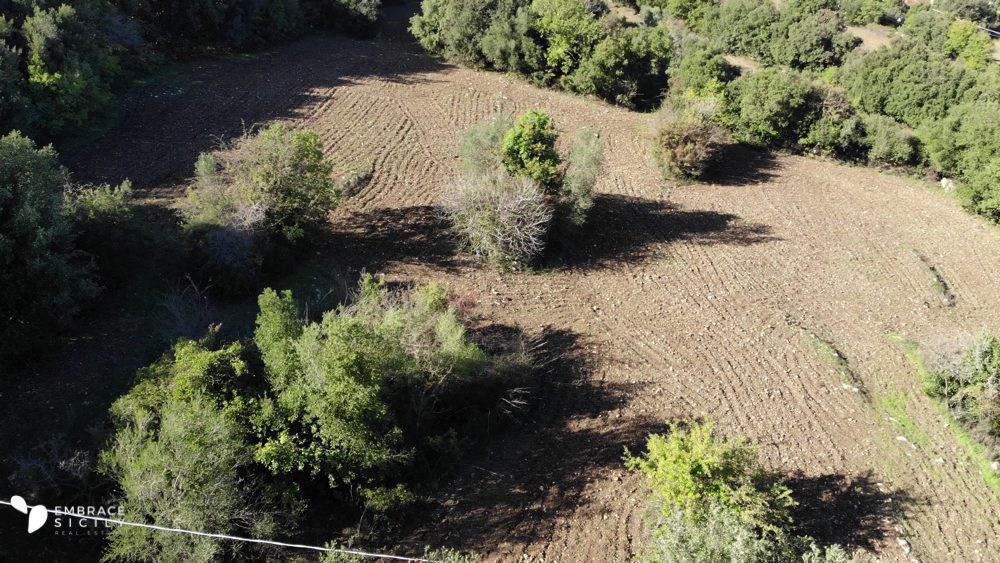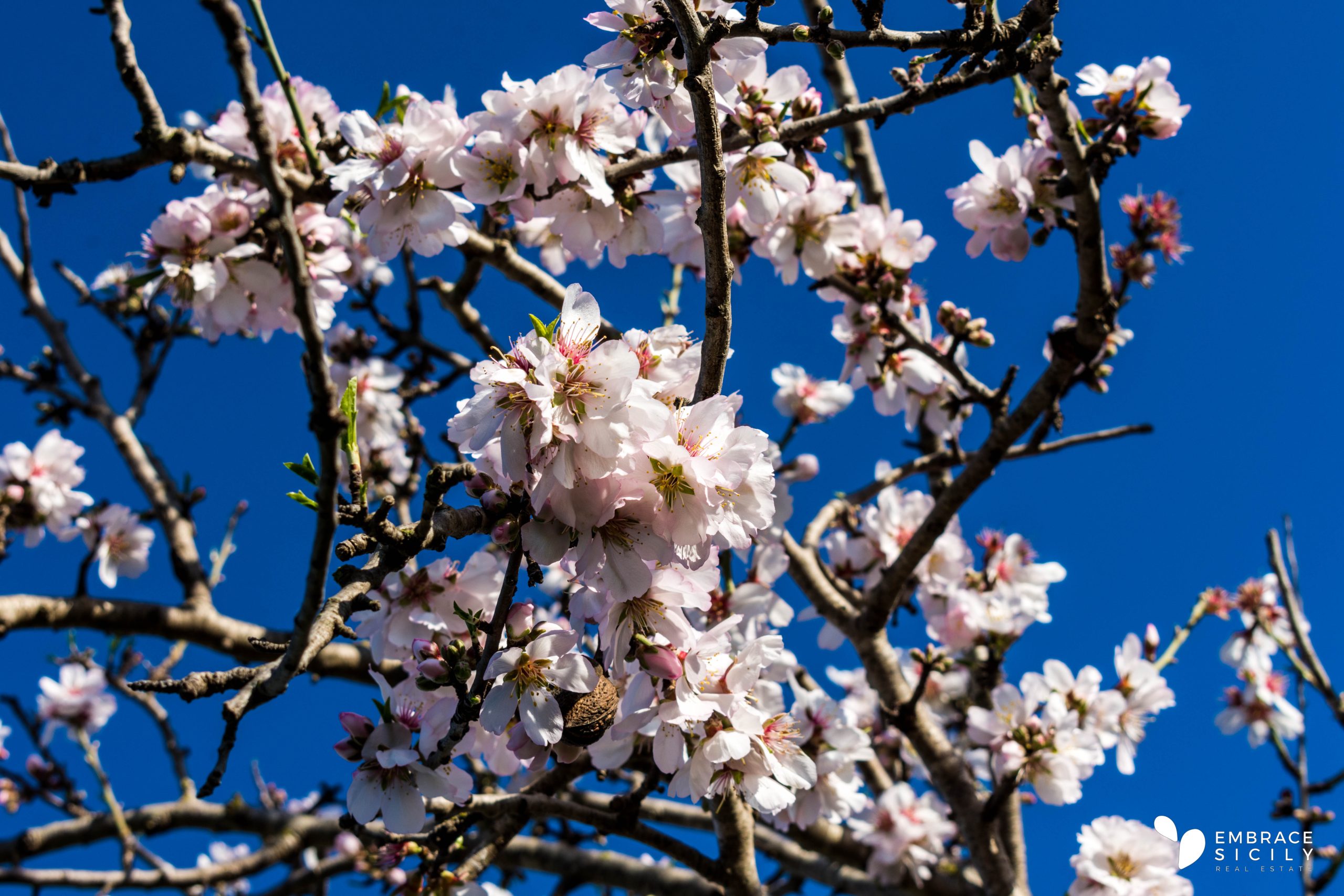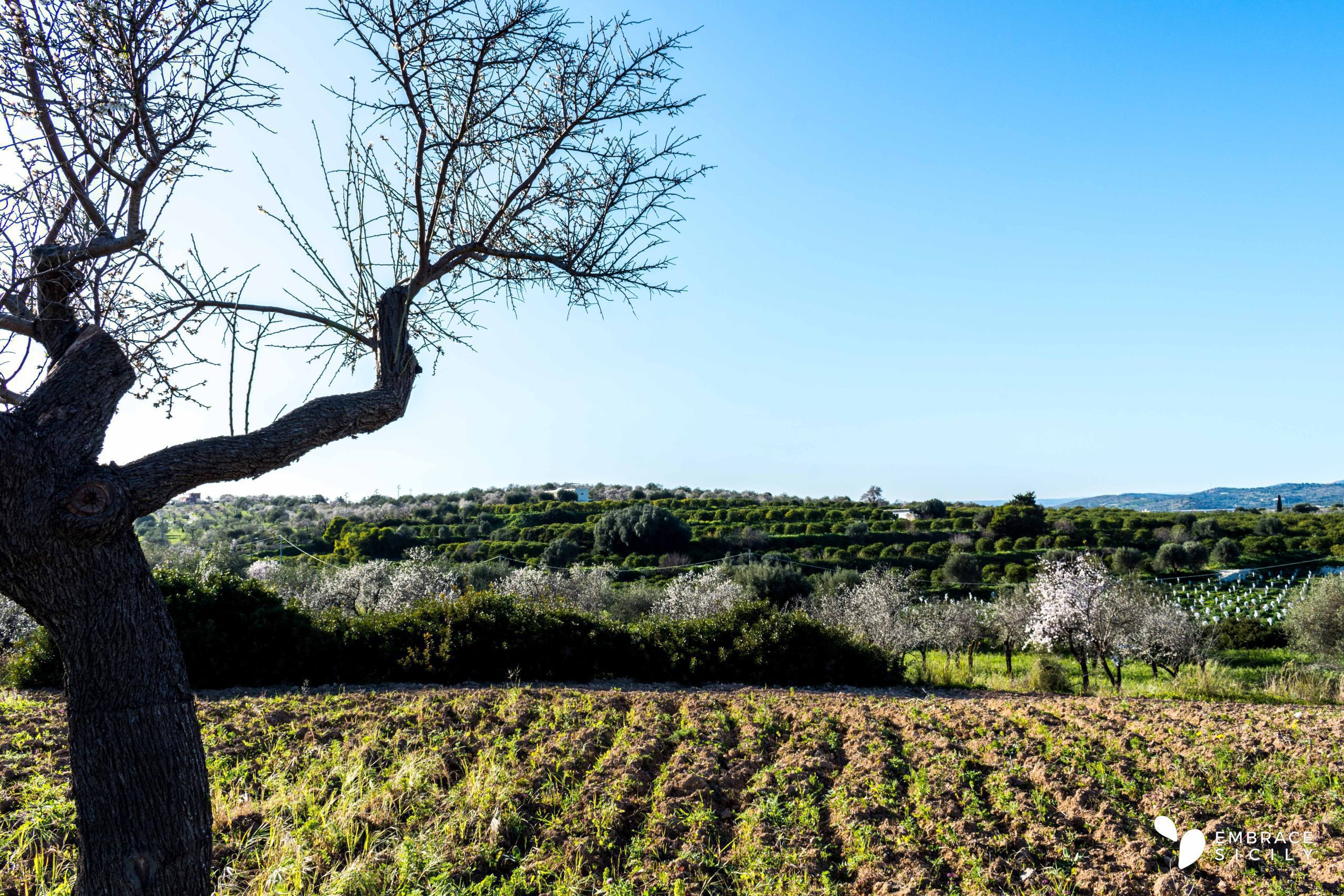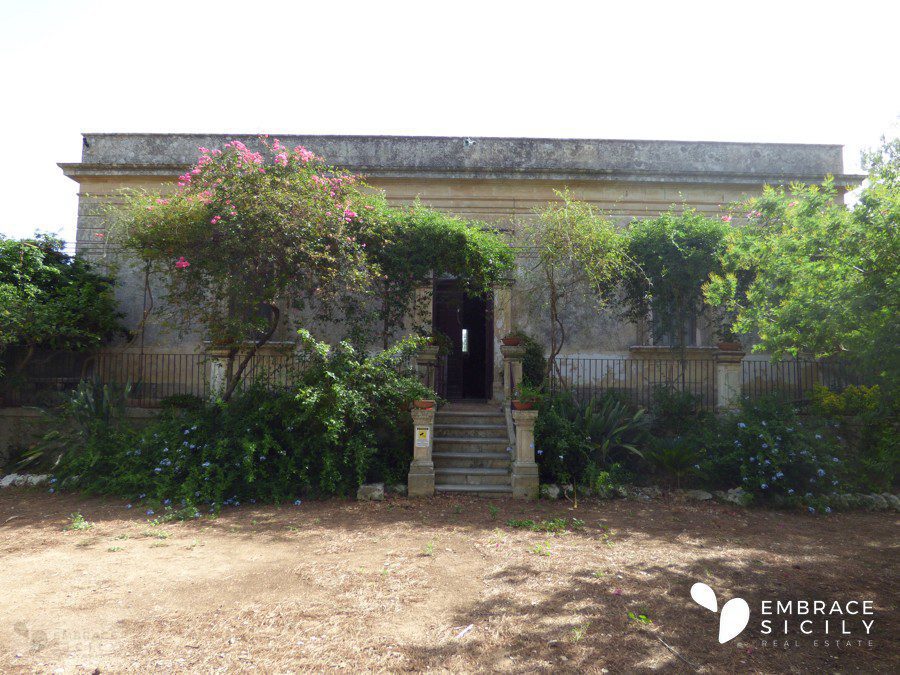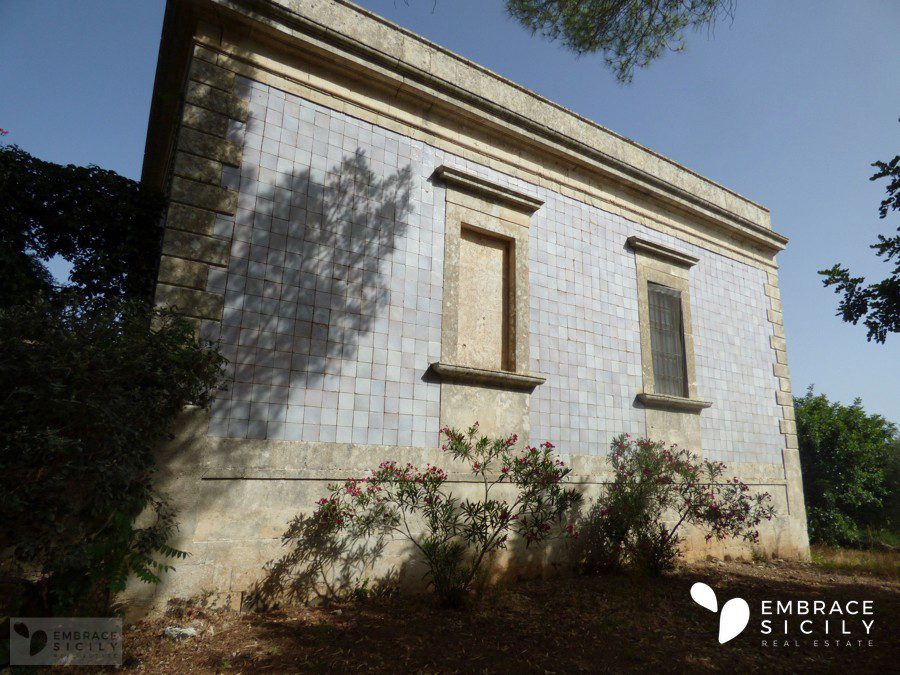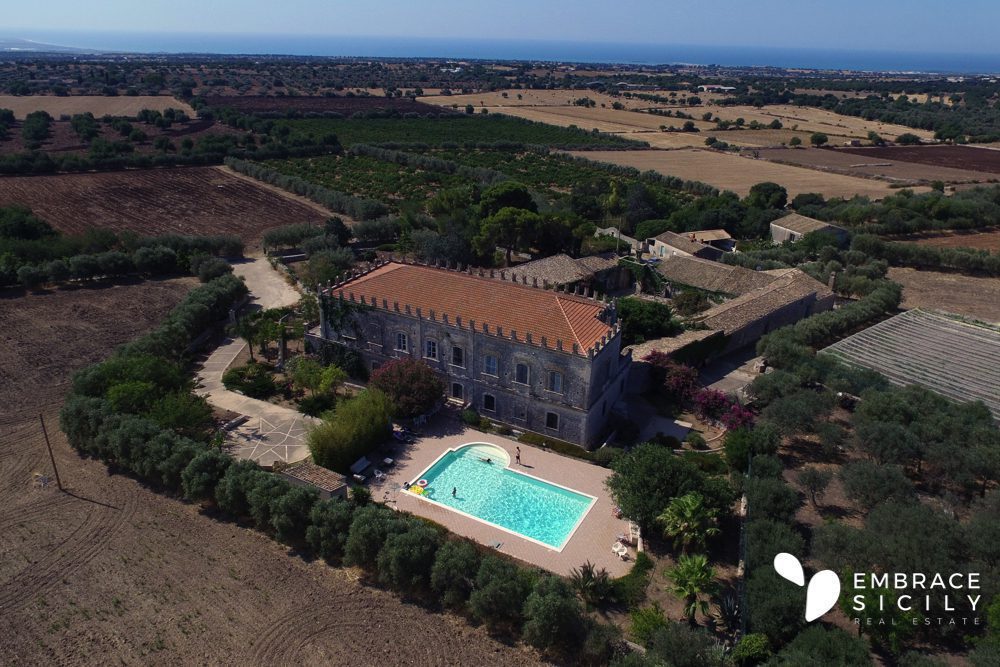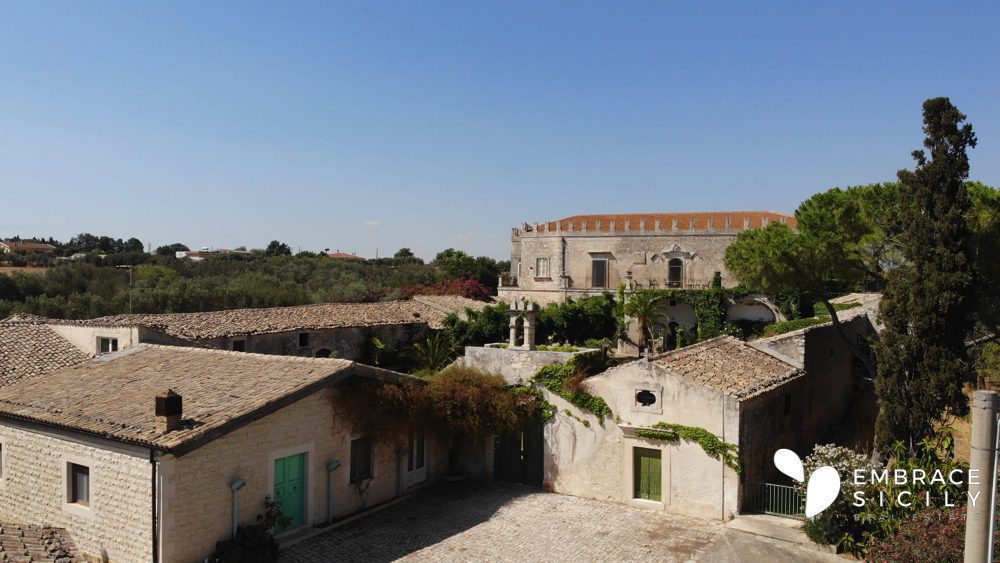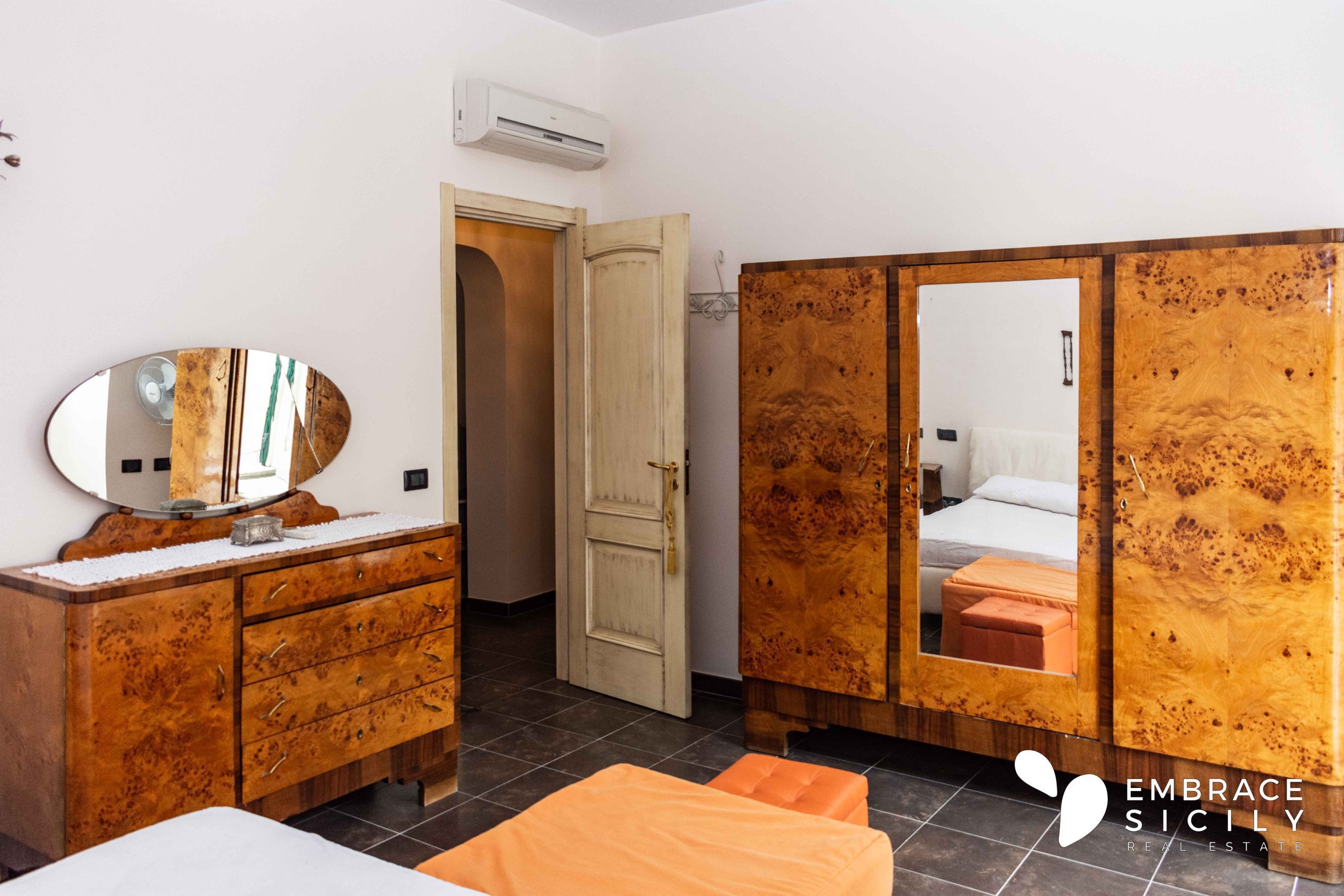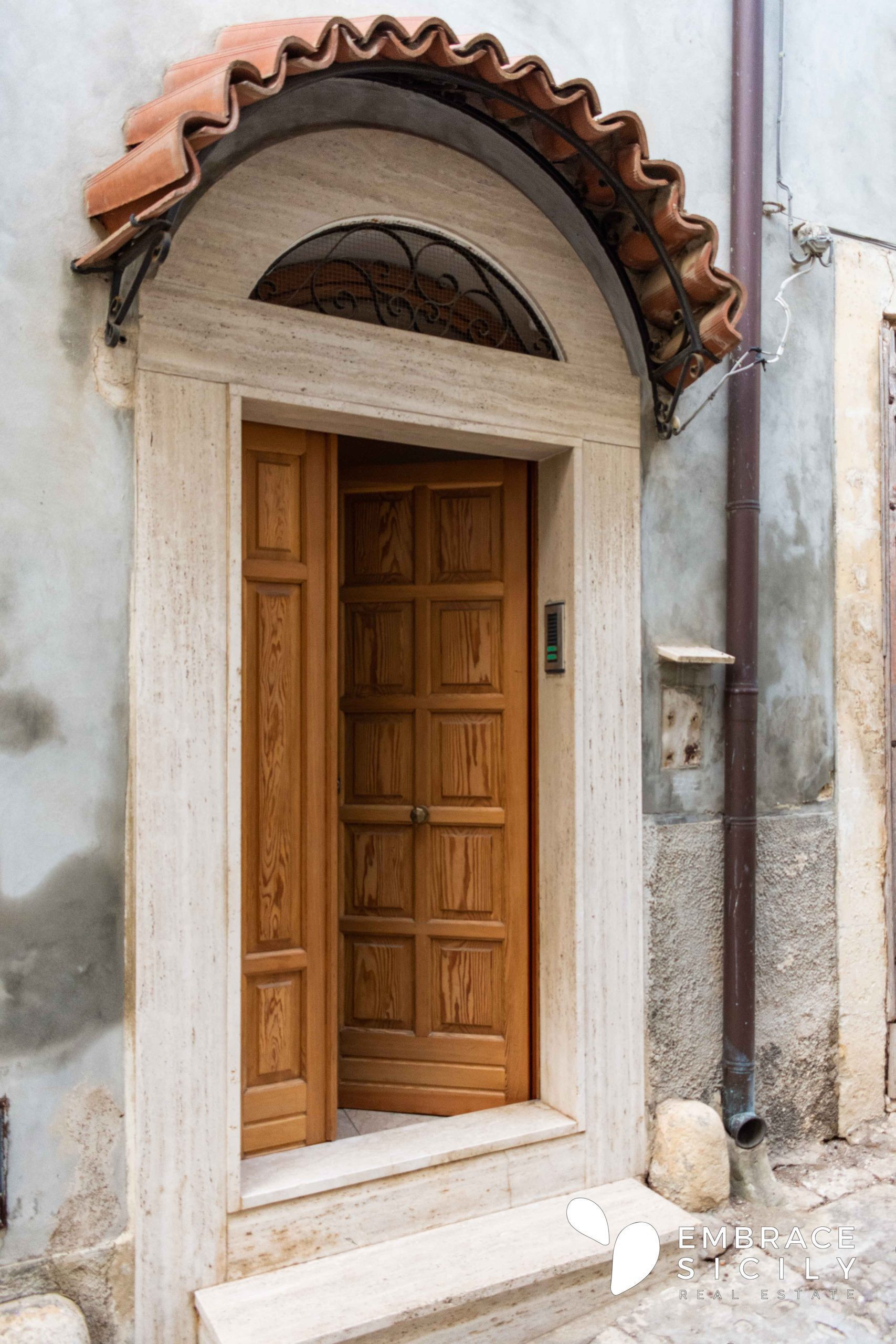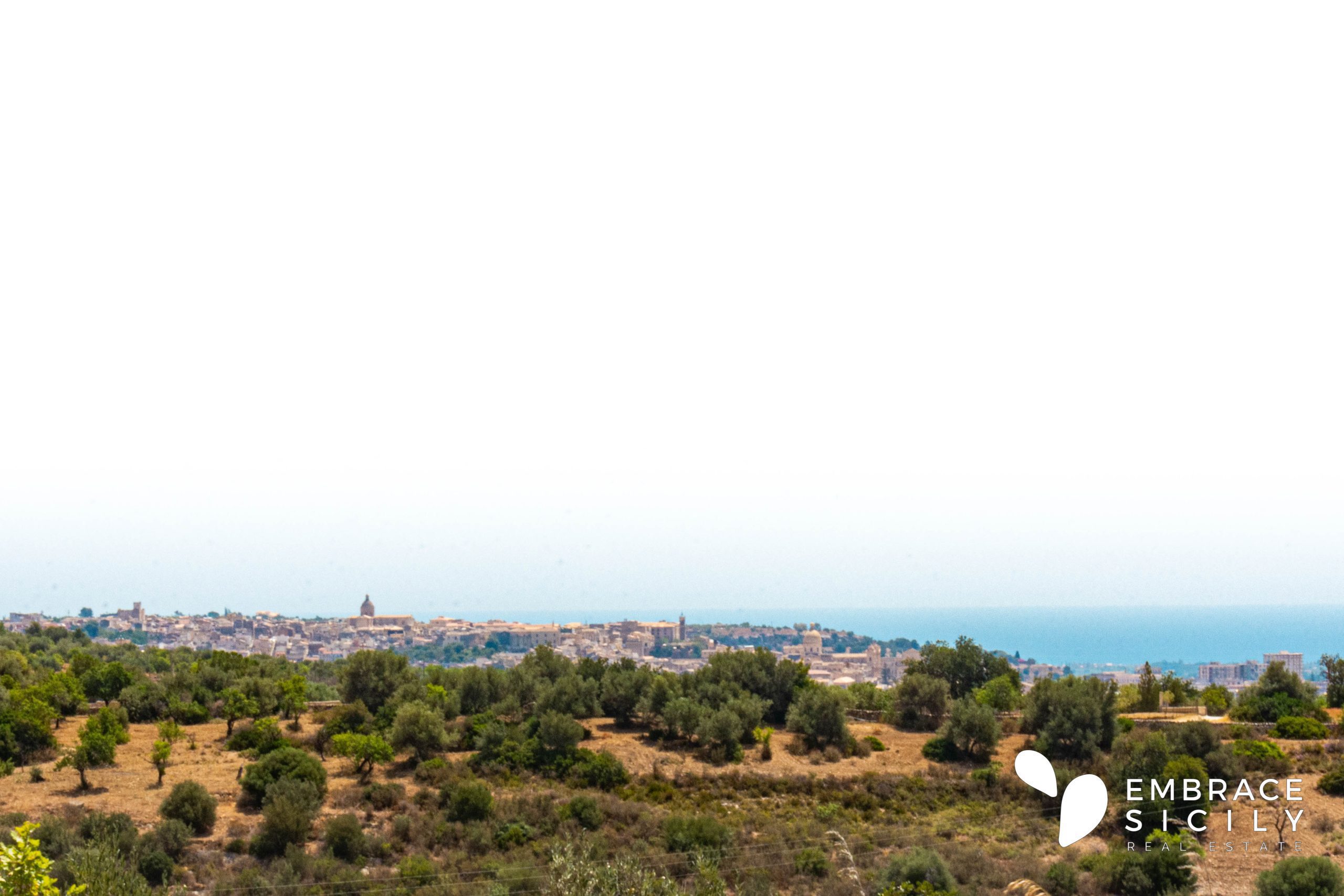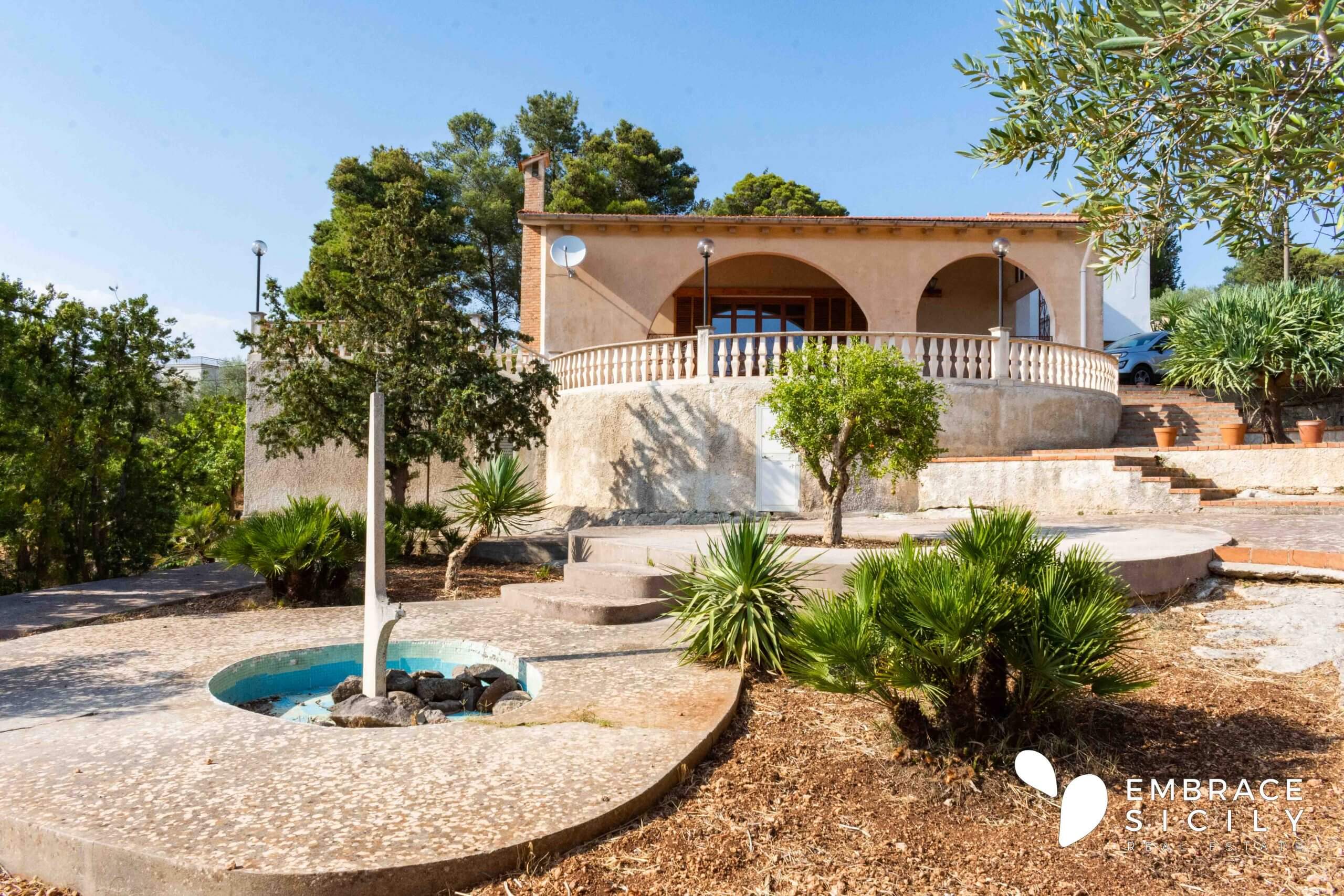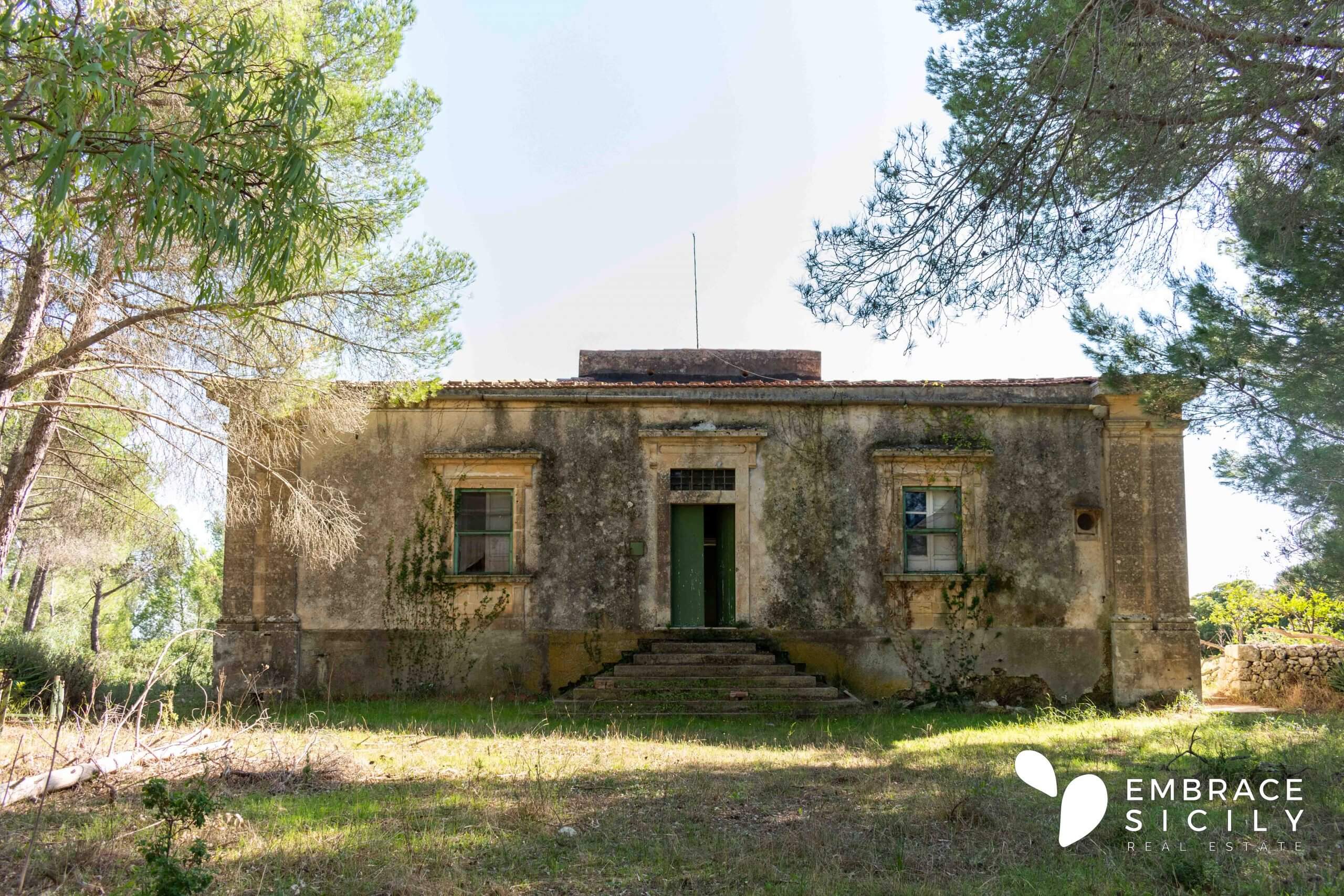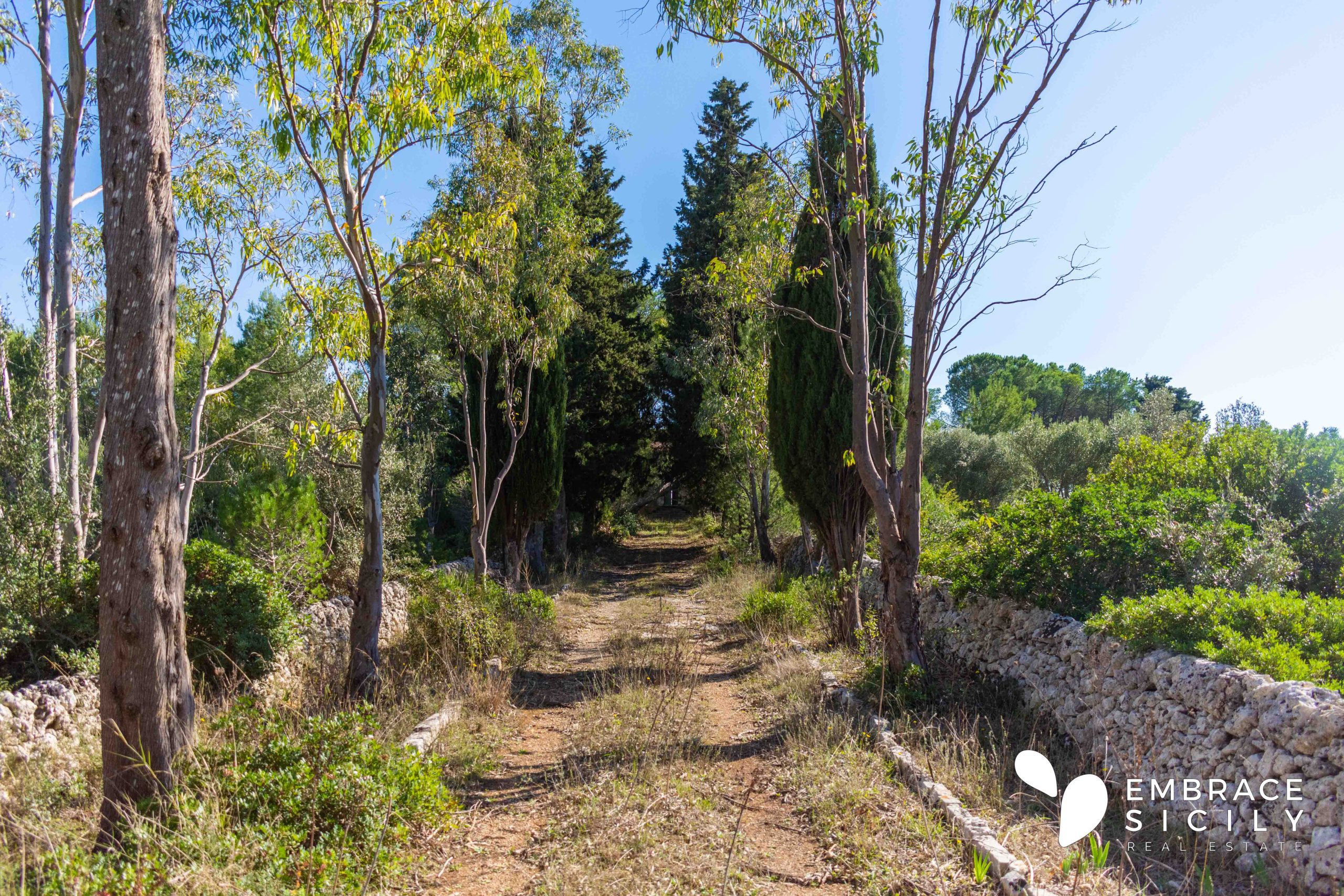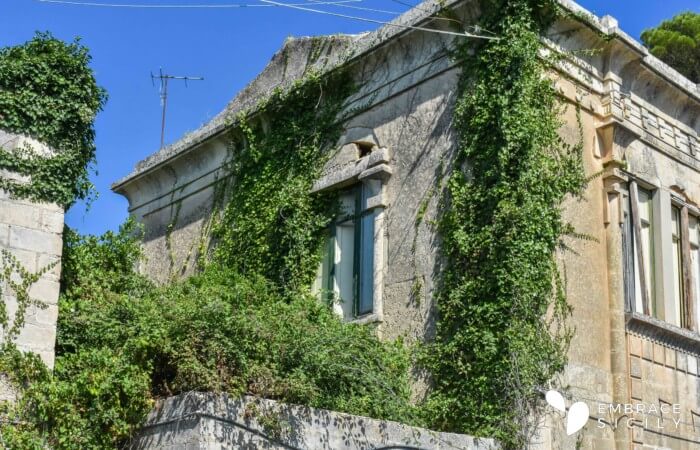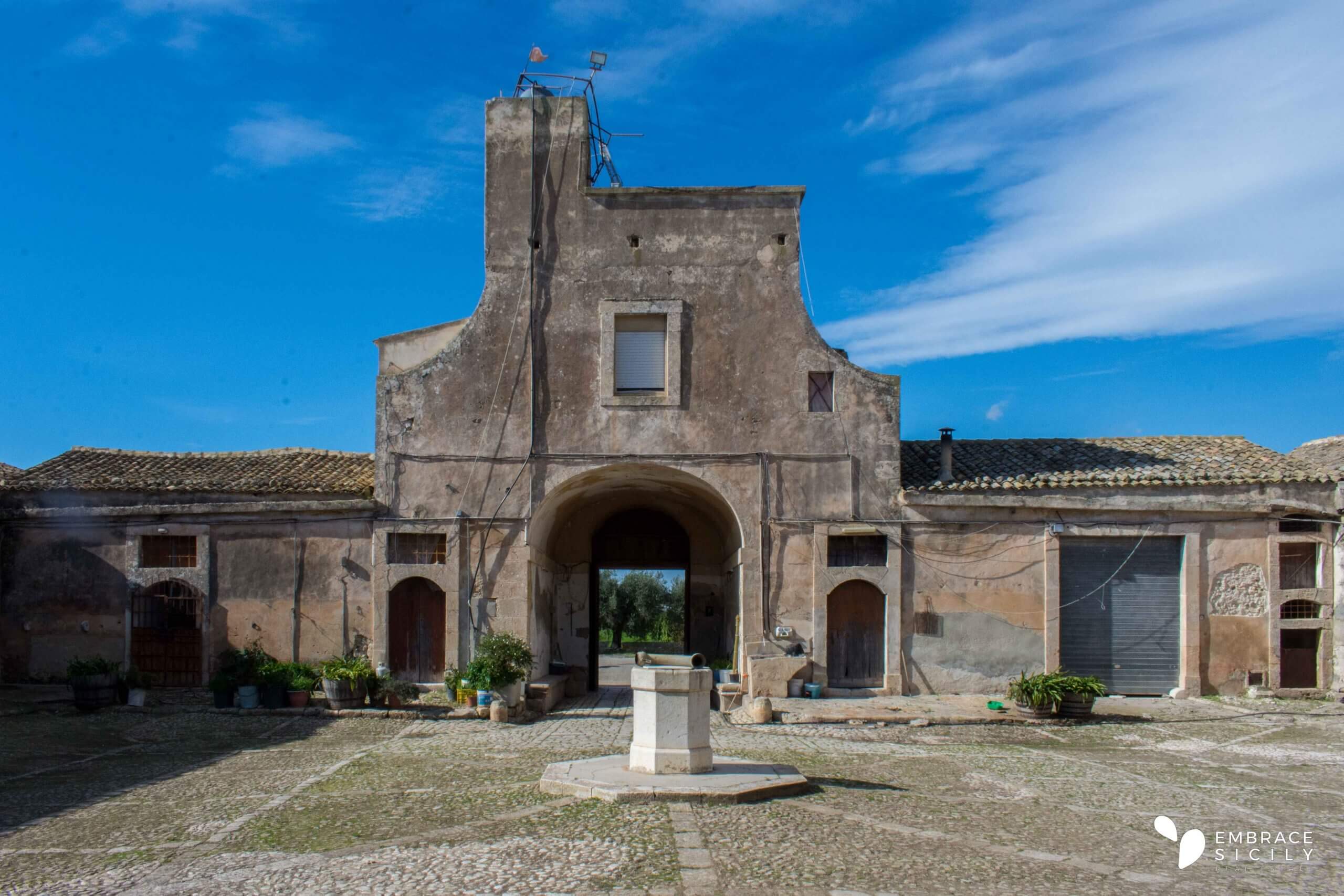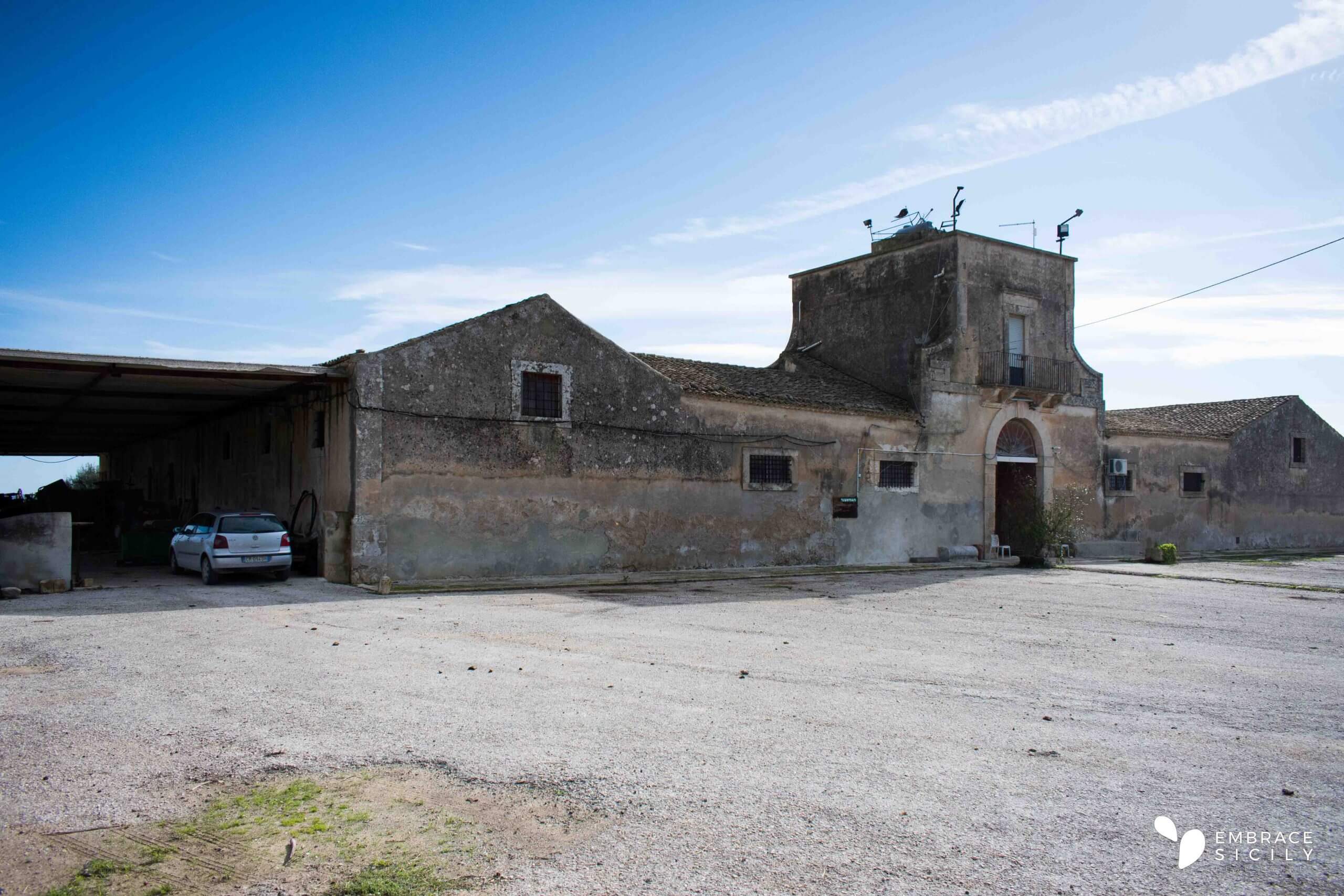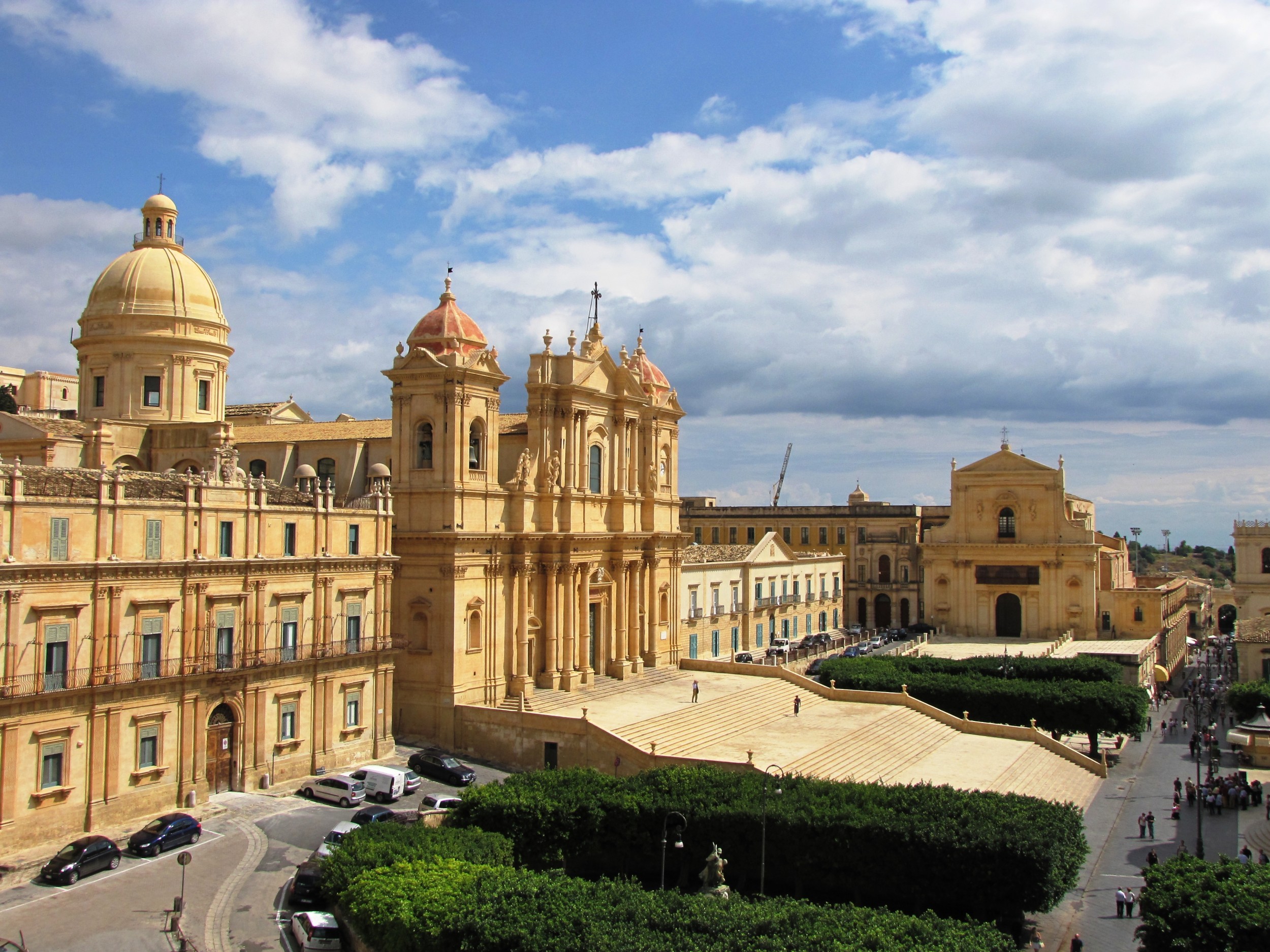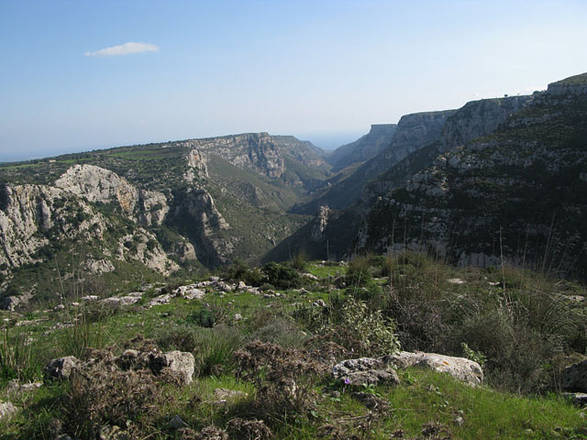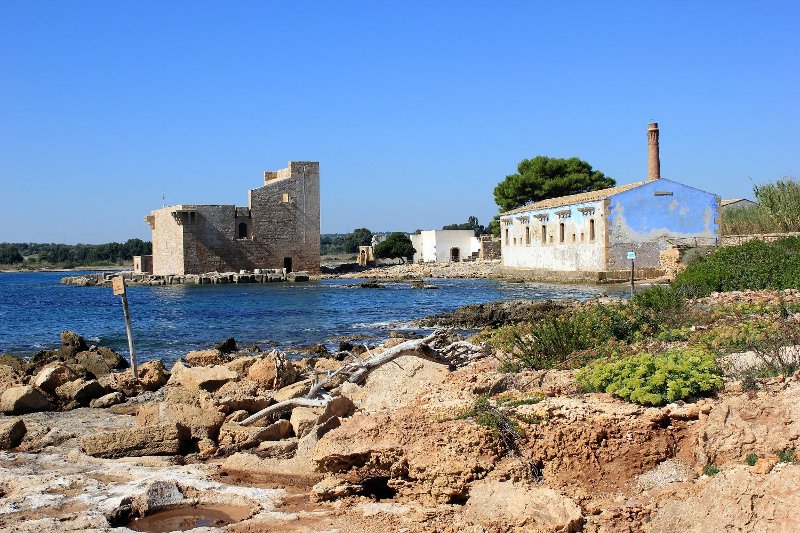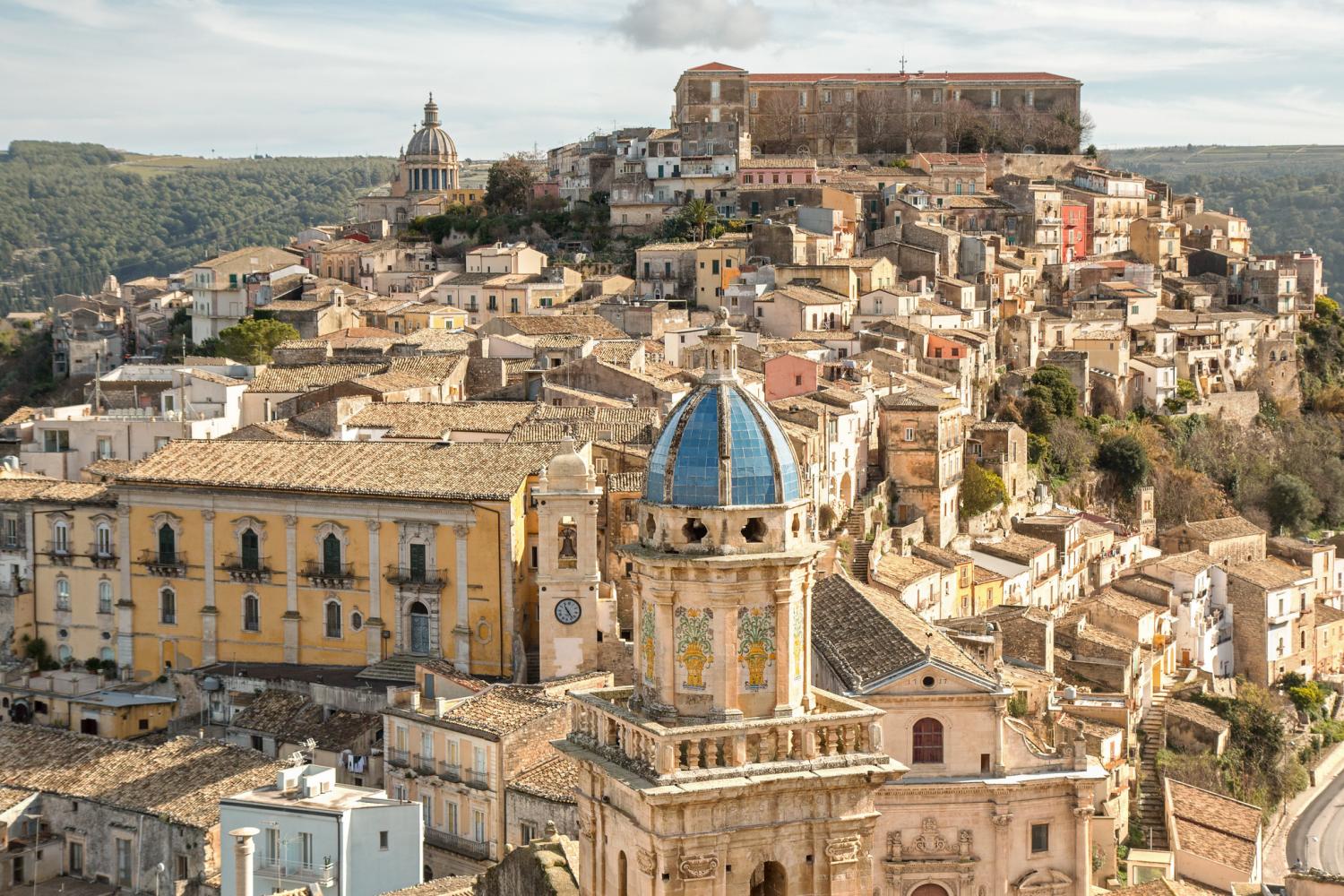Find out what to see in the historic center of Noto: The Cathedral, Castelluccio’s Palace, Tina Di Lorenzo’s Theater, Nicolaci’s Palace.
The Cathedral of Saint Nicholas
The Cathedral of Saint Nicholas is the highest expression of the Sicilian Baroque as well as the main church in the city of Noto. The beginning of the construction dates back to 1694 in the new urban site of Noto, 8 km (5 miles) from the original one (now called “Noto Antica”), wiped out by the 1693 earthquake event that destroyed most of eastern Sicily.
The Cathedral was opened to the public in 1703. However, it underwent numerous remodels over the centuries that altered its layout until the present one, which can be dated to the end of the 19th century, with the construction of the new dome by the local architect Francesco Cassone.
The structure of the church is characterized by three naves with a dome above the high altar, a facade with two side towers, almost certainly of French inspiration (because of the common features with the church of Versailles and the church of Saint Roch in Paris), and is the result of the major changes made by the architect Sinatra to the unfinished work of Antonio Gagliardi.
The first restorations, both stylistic and structural, date back to the middle of the last century, such as the tempera decoration of the vaults or the “trompe-l’oeil” of the vertical structures, but above all, the re-roofing that saw the replacement of the original pitched roofing (with a wooden structure) of the nave with a decidedly heavier concrete slab. It was this new roofing solution what caused the collapse of the central and right naves on February 13, 1996.
The pillars of the nave presented already a structural defect, since they had been built using the “a sacco” technique (a technique that involved filling the hollow columns with sand and squared ashlars so that seismic waves would be dampened) in which, however, river stones were used instead of ashlars. The replacement of the light wooden ceiling with the concrete one weighed heavily on the columns, which, also due to a heavy weather that brought copious and long-lasting rainfall, were no longer able to support their weight. A domino effect then began, starting with the first pillar on the right, main support of the dome. Fortunately, a small part of the tambour and the left nave, where the silver ark of the Patron Saint Conrad was kept, were left standing.
In 2000, a long and careful restoration began, which was completed in mid-2007. The reconstruction was aimed at restoring the naves using ancient techniques, that is, using squared limestone ashlars without involving any concrete. The pre-1950 roof was reconstructed with wooden trusses and Sicilian tile roofing, and even the arches were rebuilt with a traditional technique involving lath and plaster. The technical innovation of the skillful conservative restoration lies in the choice of light but strong materials, such as carbon fiber, to improve resistance to strong earthquakes.
The remaking of the interior decorations, such as the frescos of the vaults and naves, the windows and the statues of the niches, was the work of great national and international contemporary artists such as Oleg Supereko (Russian painter to whom the frescos were commissioned) or the Italian artist Francesco Mori, who made the stained-glass windows of the tambour.
Di Lorenzo del Castelluccio Palace
Di Lorenzo del Castelluccio Palace (or simply Castelluccio Palace) was the first neoclassical-style palace in the Baroque city of Noto, built in the late 18th century at the will of Marquis Niccolò Di Lorenzo and his wife, Agata Battaglia. The couple’s intent was to stand out in the urban context, hence the decision to opt for the neoclassical style, very much in vogue at the time and different from the charged Baroque style that characterized the soul of the city.
The entrance to the palace, very similarly to Roman palaces, overlooks the main courtyard and is decorated with limestone bas-reliefs. The access to the main floor is provided by two symmetrical staircases decorated with two palms (symbol of wealth). The palace counts with about 5000 square meters (54,000 square feet) distributed in 105 rooms. The Castelluccio Palace is considered one of the largest and most important in the Val di Noto area.
The structure is composed of several levels and is divided in different areas, from those reserved for the noble families, to the servants’ quarters and the stables, up to the main and representative floor, composed by a succession of exquisite living rooms decorated with splendid neoclassical frescos.
The palace, from its construction until the 19th century, hosted the largest and most influential Sicilian noble families who shared the residence with the Di Lorenzo del Castelluccio family.
After the death of the last marquis in 1981, the palace was inherited by the Order of the Knights of Malta. There began a period of silence and neglect, the precious furnishings were sold, and the once lively and opulent residence found itself denuded and forgotten, with only the frescoes and majolica tiles to remind us of its past glamour. And so it was for over 30 years, until a French businessman, being deeply impressed, especially by the symmetrical staircase and the two 100-year-old palm trees in the court, decided to buy it, intending to bring back its past luster. Unfortunately, there was no record of what the original furnishings looked like. Despite this, it was decided to create a coherent décor, to tell the story of an imaginary enlightened gentleman of the 17th century. Luchino Visconti’s “The Leopard” was the main source of inspiration for the project. After the skillful and careful restoration of the palace, the new owner filled the rooms and halls with furniture, ornaments, paintings, and engravings all originating from Southern Italy. He even included a portrait of Ferdinand of Bourbon, King of the Two Sicilies, testifying to the deep connection between the Spanish crown and the city of Noto.
In 2018 the palace opened to the public and become one of the city’s major attractions.
Tina Di Lorenzo Theater
The Tina di Lorenzo Theater, originally named after Vittorio Emanuele III, is the most recent among Noto’s main monuments. Built at the behest of the then mayor of Noto, Giuseppe Di Lorenzo, as well as to meet the increasing demand of the citizens of the new provincial capital, who helped finance its construction (although most of the funds were provided by the Di Lorenzo family) in the second half of the 19th century. The theater was inaugurated in 1870.
The design and construction were entrusted to the most important professional figures of the period, such as Fortunato Queirau, who supervised the work, and the painter Santi Ferrara of Messina, who performed the gilding.
Since its opening, the theater has seen performances by artists of great stature such as Tina Di Lorenzo, Eleanore Duse and Pierantonio Tasca. To this day, it continues to feature theatrical performances that are in no way inferior to the ones of the best cultural venues in Italy.
Nicolaci Palace
The Nicolaci Palace of the Princes of Villadorata is one of the most symbolic palaces and monuments in the city of Noto, an emblem of the opulence and wealth that the city experienced during the Bourbon reign.
The construction of the palace dates back to the early 1700s and took more than 65 years to complete. The most important and distinguishing feature is the marvelous curved balconies whose corbels, with its sirens, sphinxes and hippogriffs, skillfully carved by the best craftsmen of the time, are mentioned in art history books as an exquisite example of Baroque art.
Inside, one reaches the main floor through a neoclassical staircase, where a succession of decorated salons begins, each with a different theme, such as the Tea Room in oriental style or the Ballroom frescoed using the “trompe-d’oeil” technique, simulating a balustrade surmounted by columns in the side walls, presenting a sort of calendar with an allegory of Apollo’s chariot chasing Aurora in the center of the ceiling.
For nearly 40 years, the street of the Nicolaci Palace has served as the setting for one of the city’s main festivals – the “Infiorata” – where sixteen large paintings are made in the street using flower petals and various strictly organic materials. The theme of the festival is decided each year by the city council.
OUR SUGGESTIONS
Watch our videos
Blog
EXPLORE THE AREA
Didn’t find what you were looking for?





